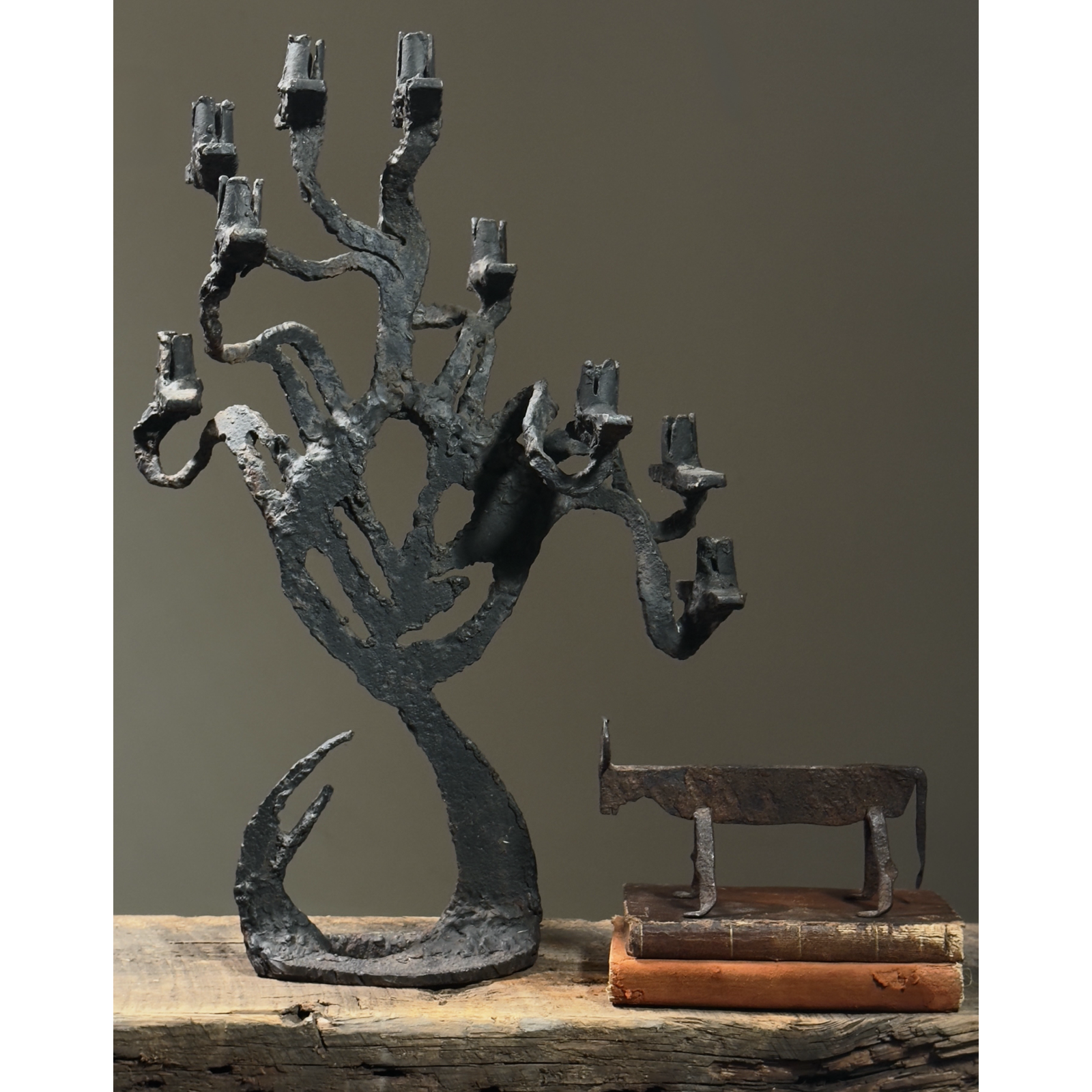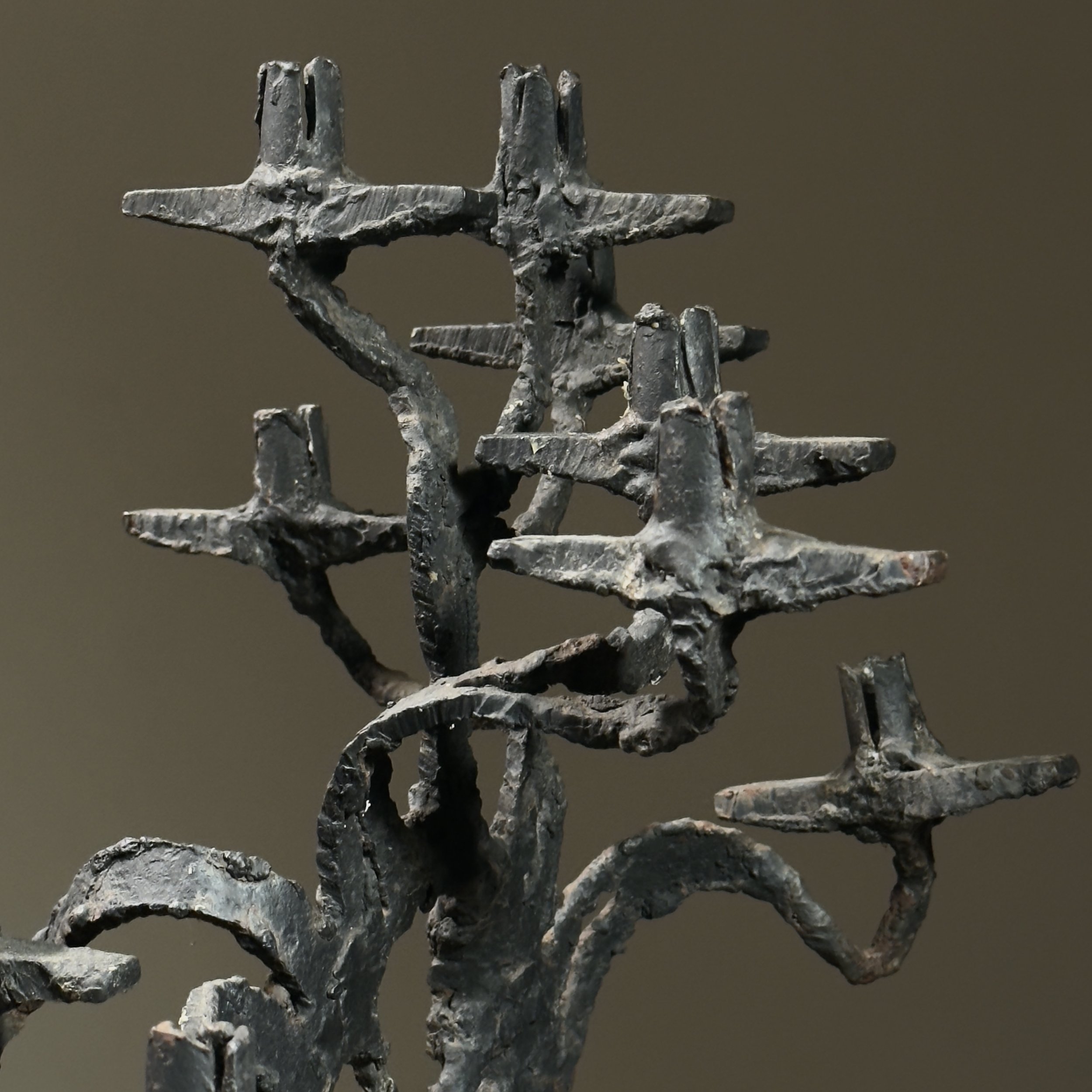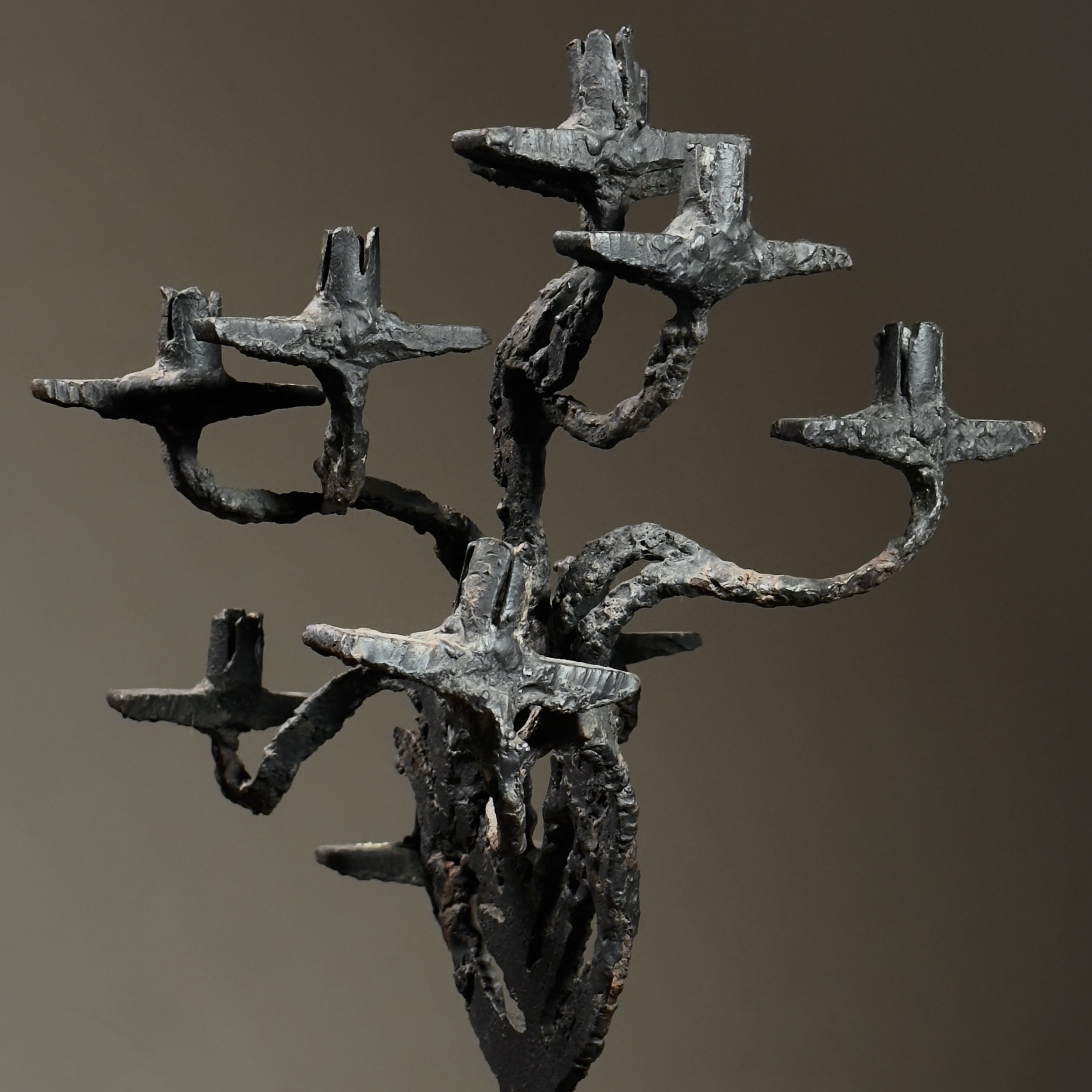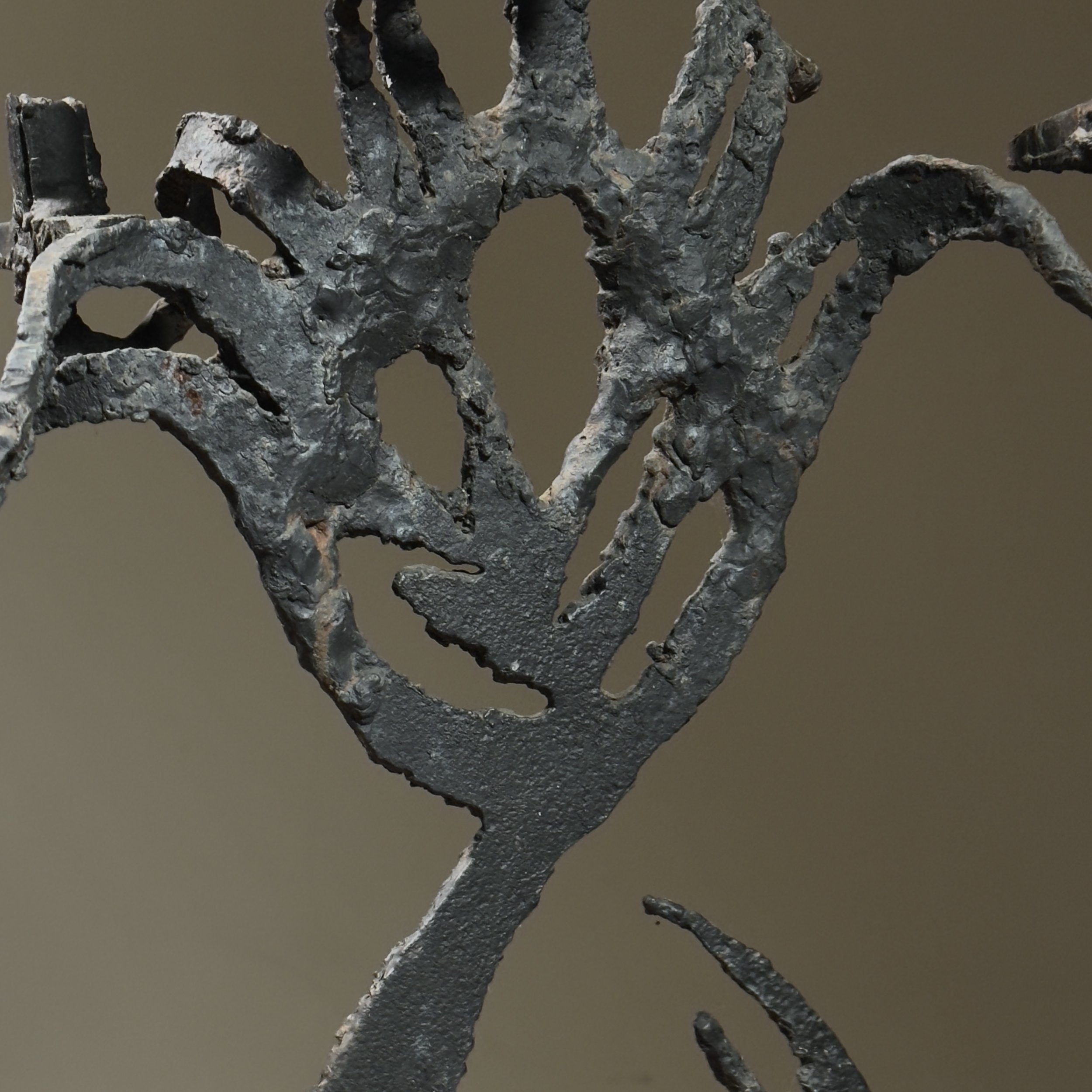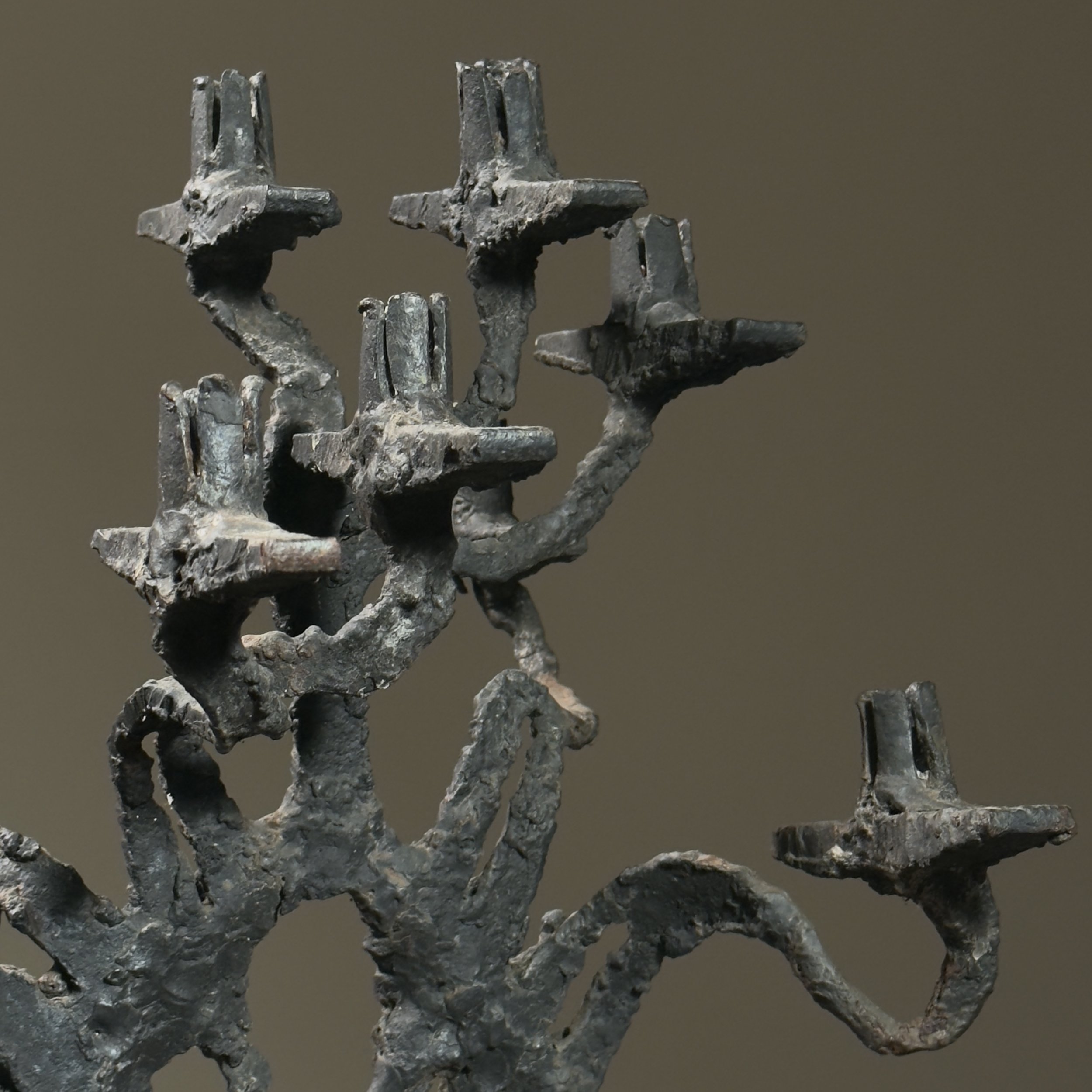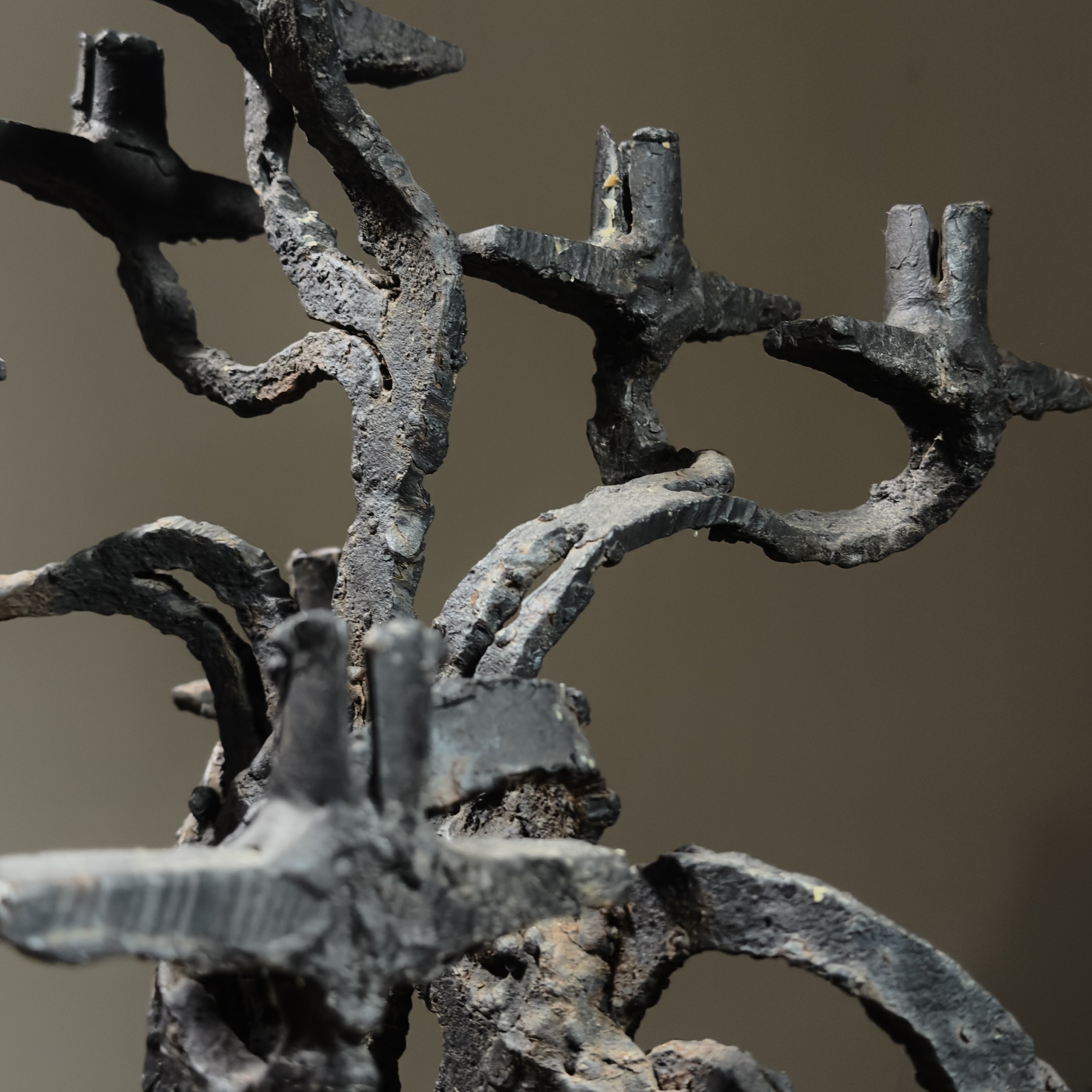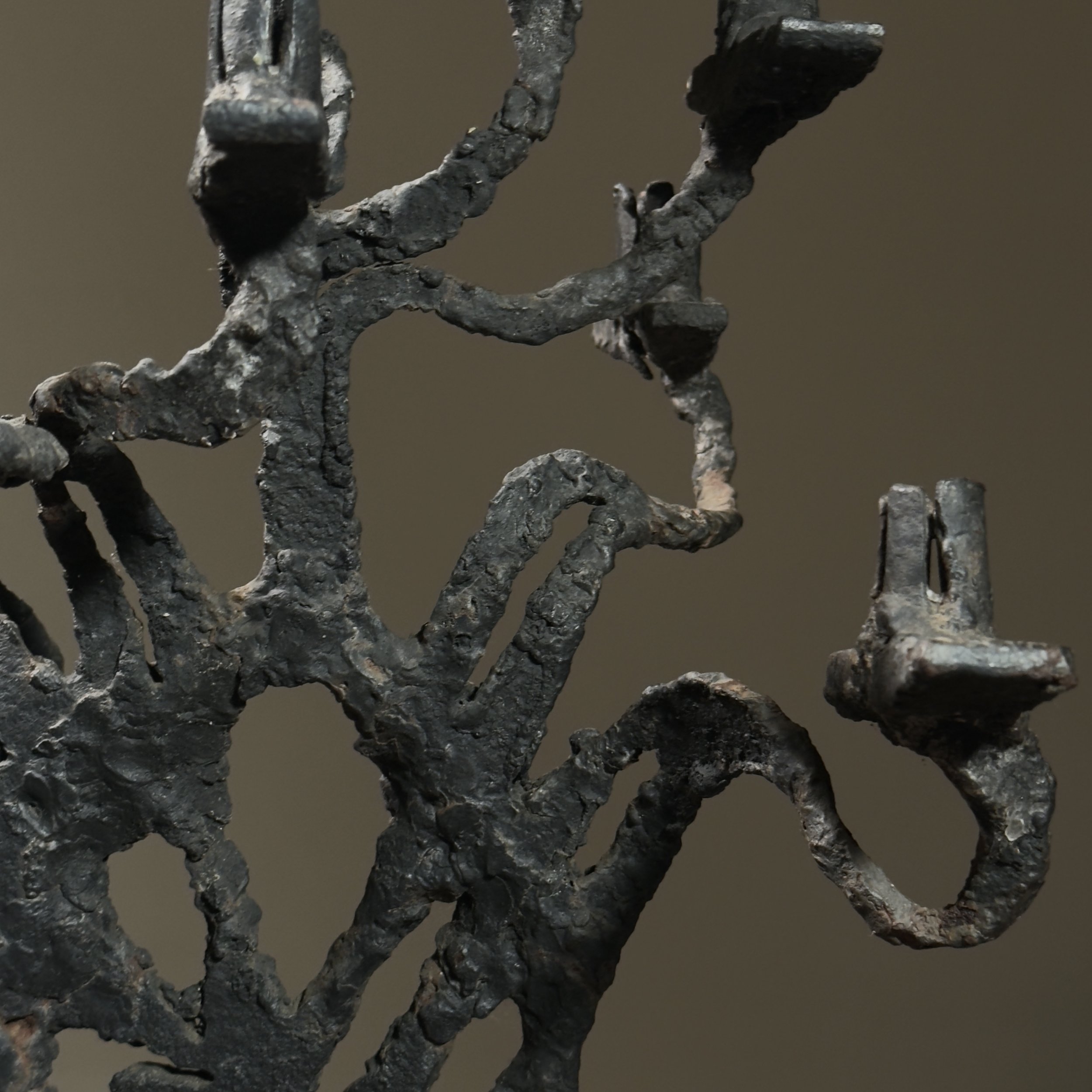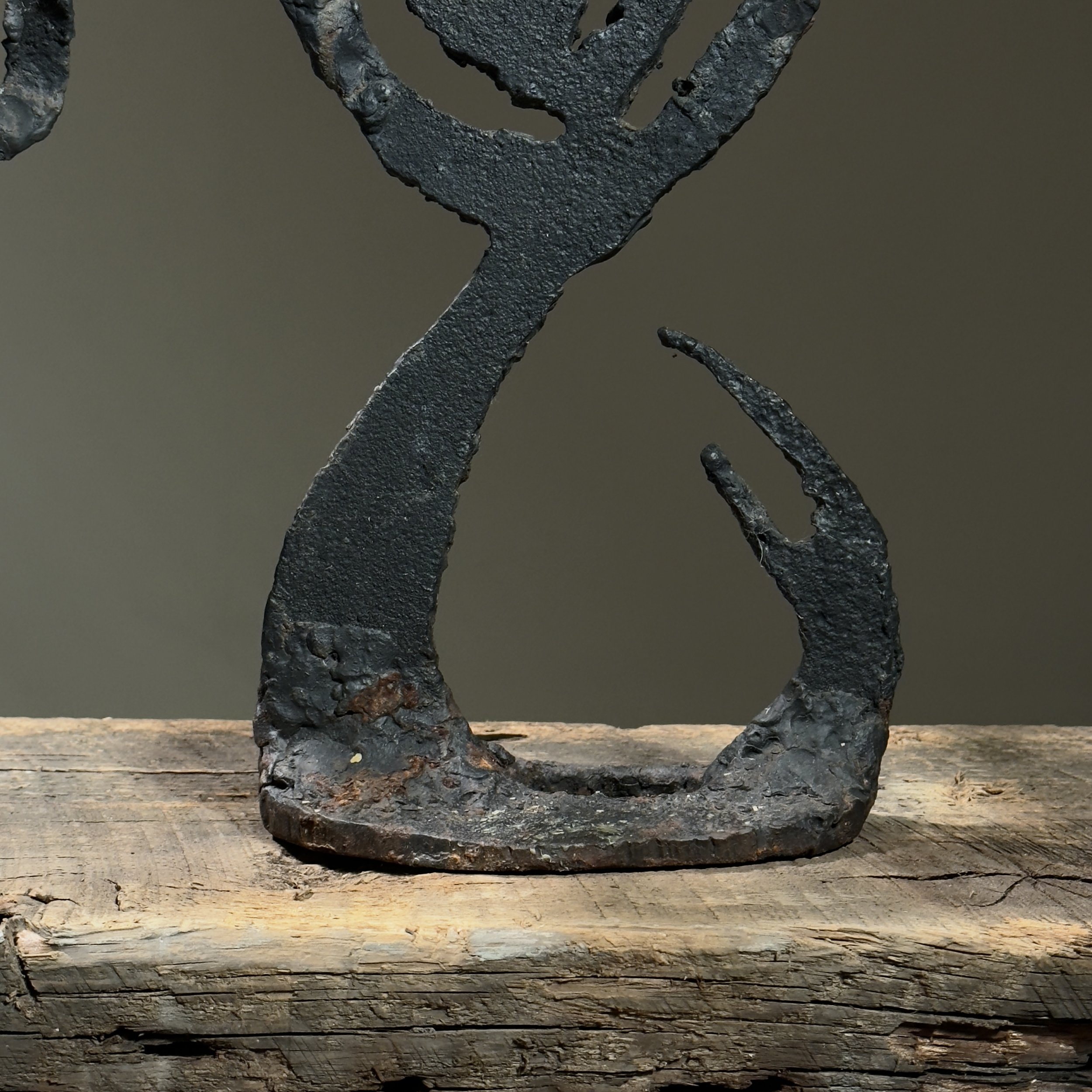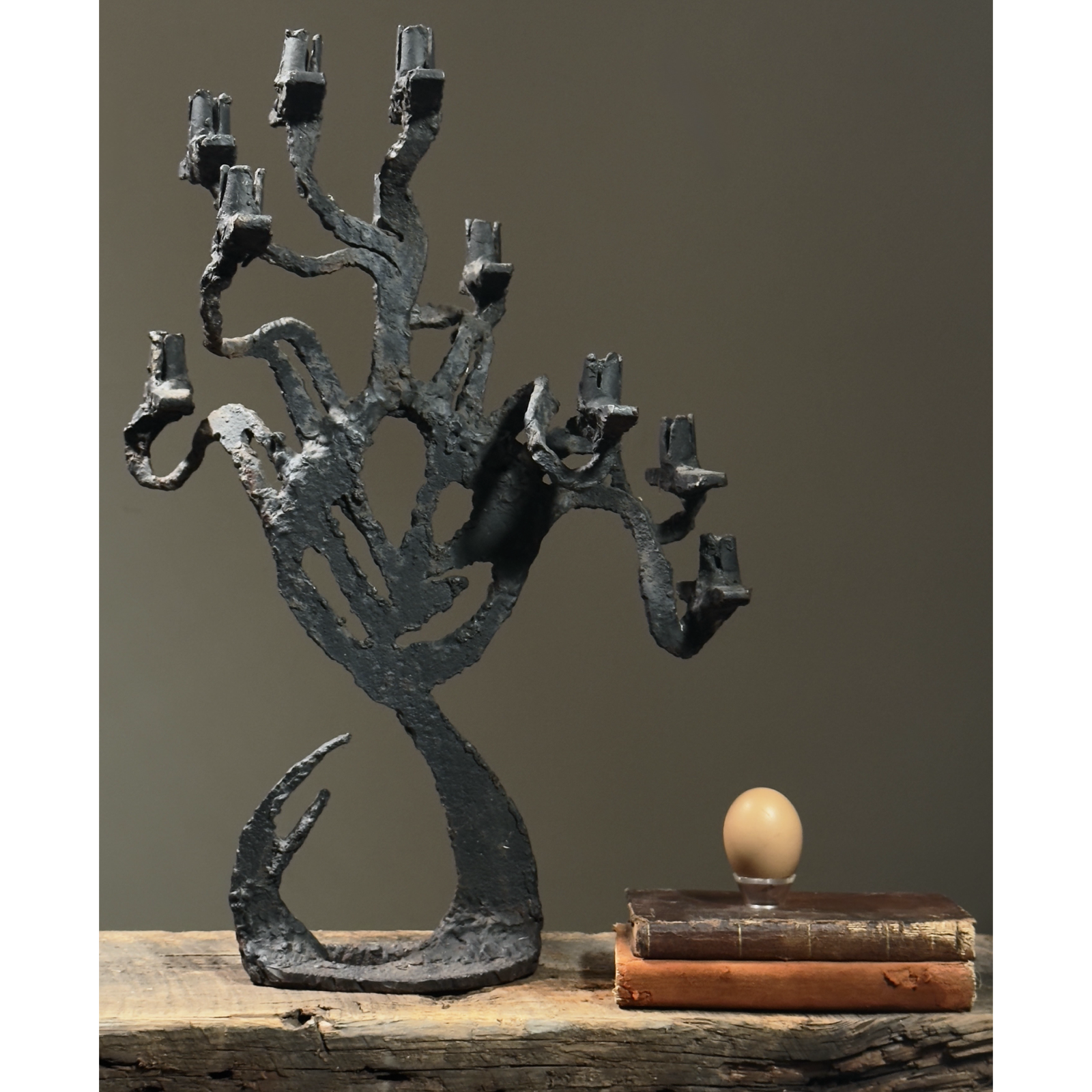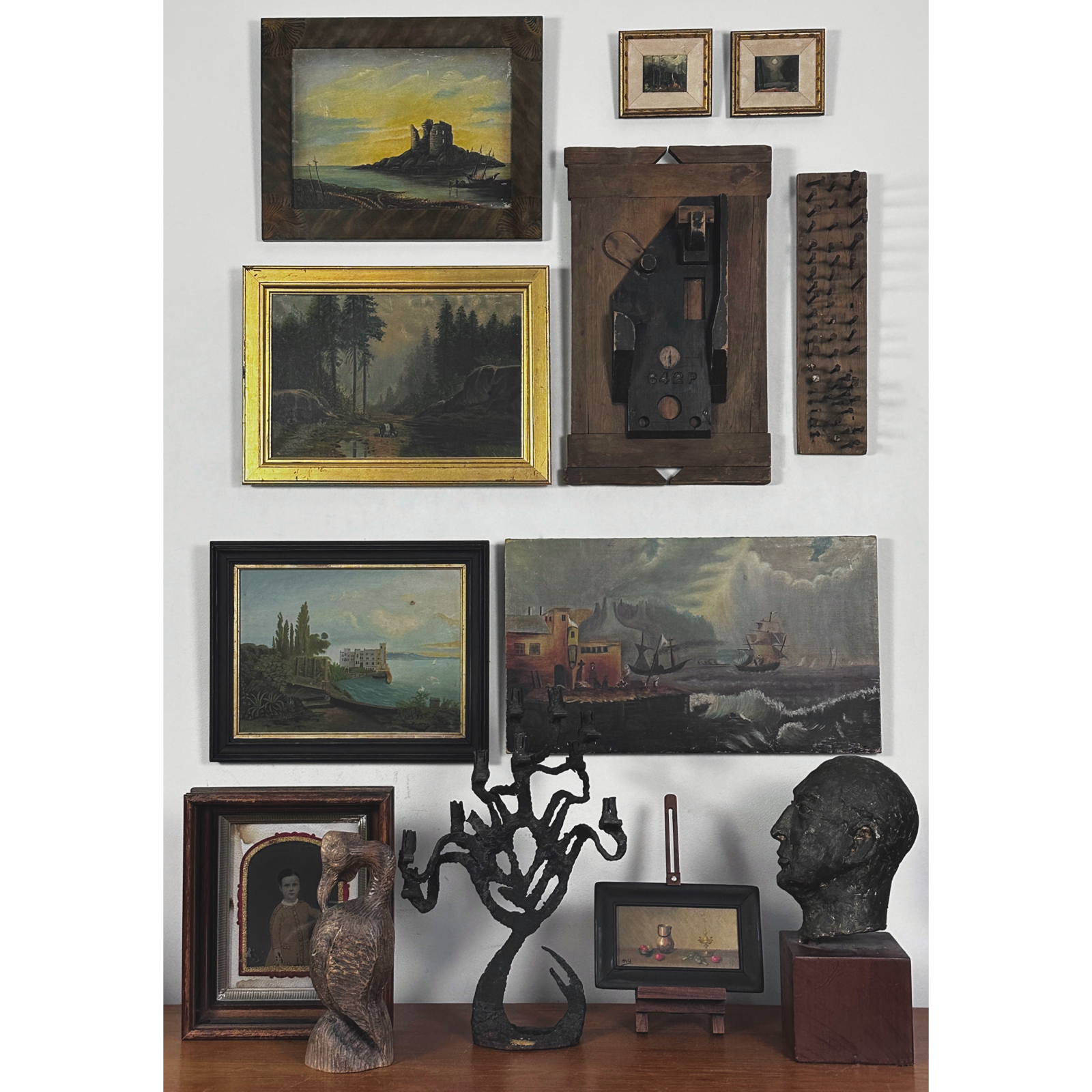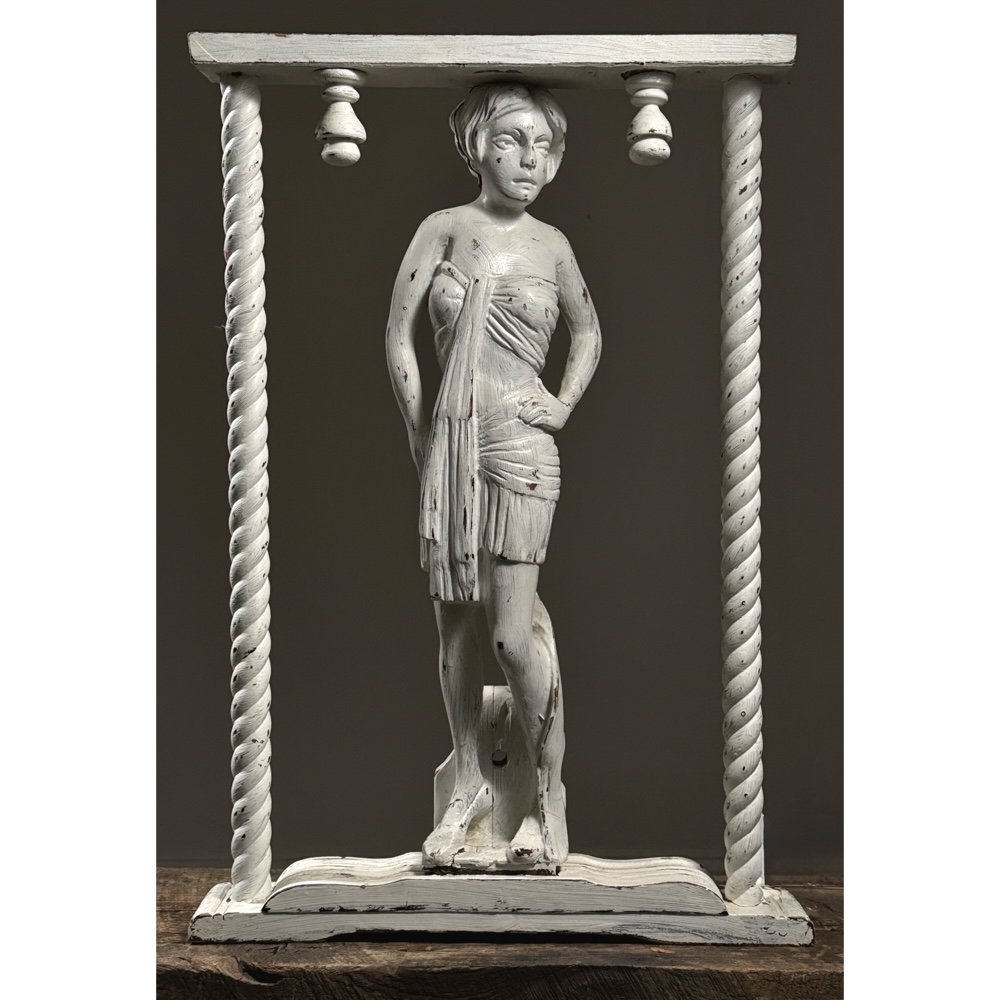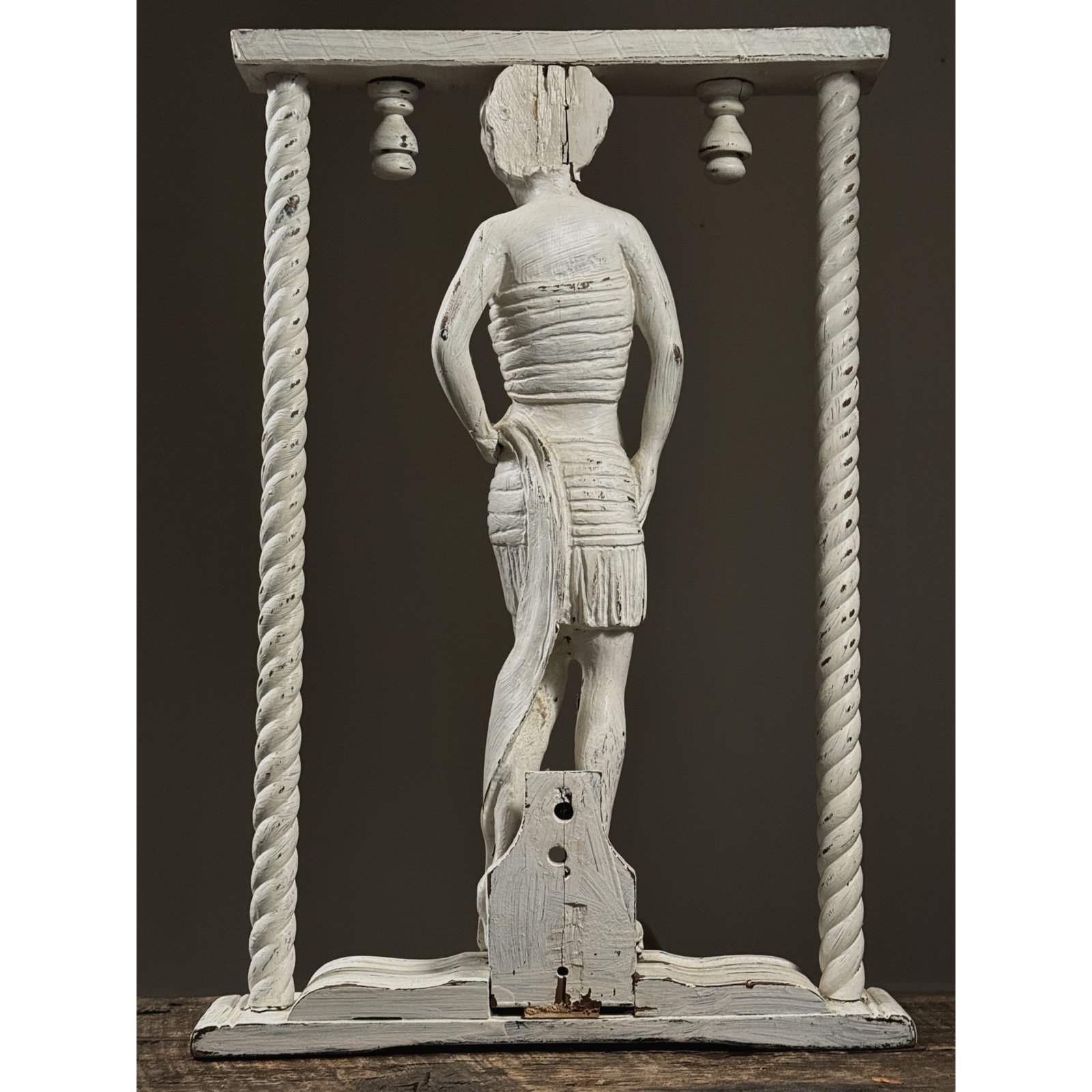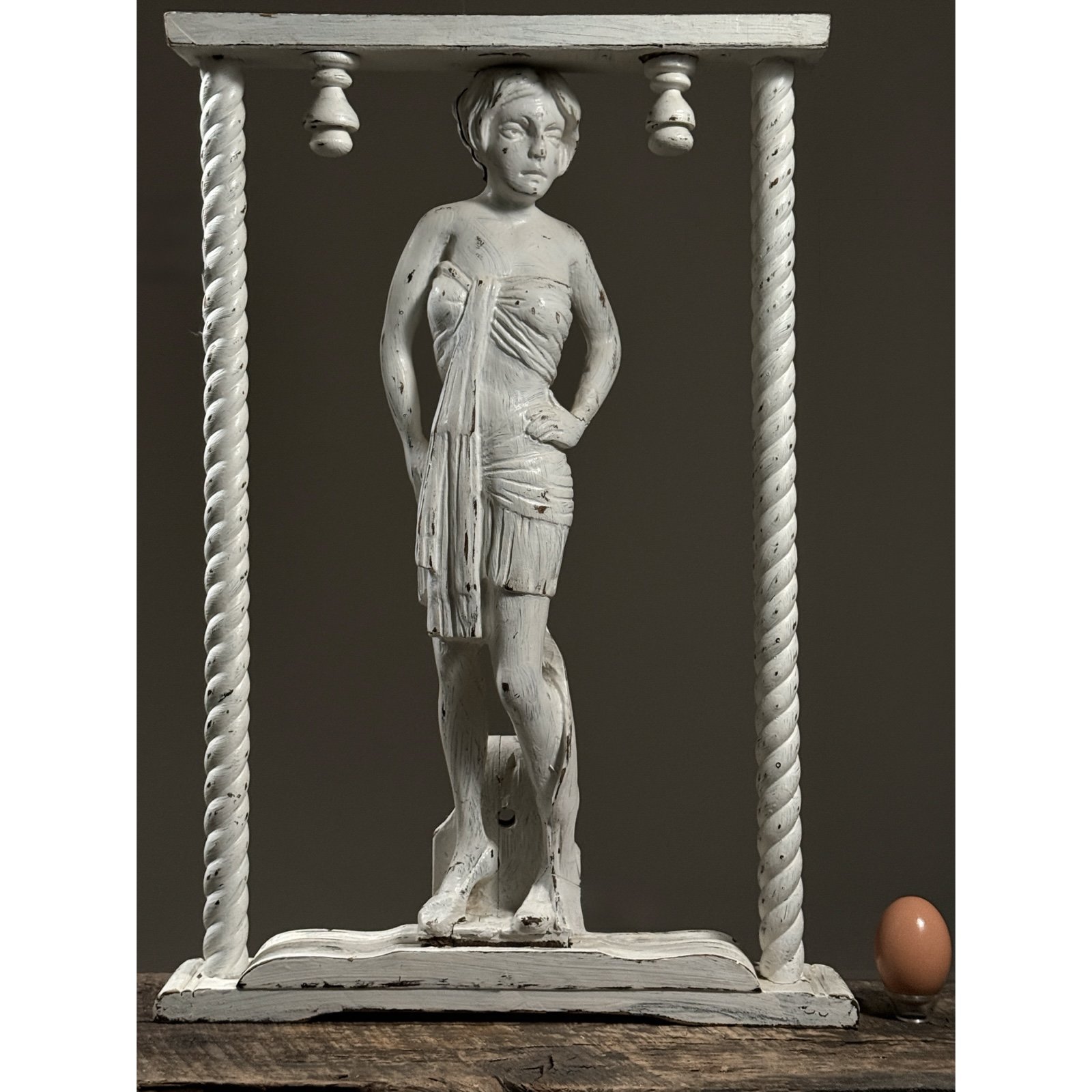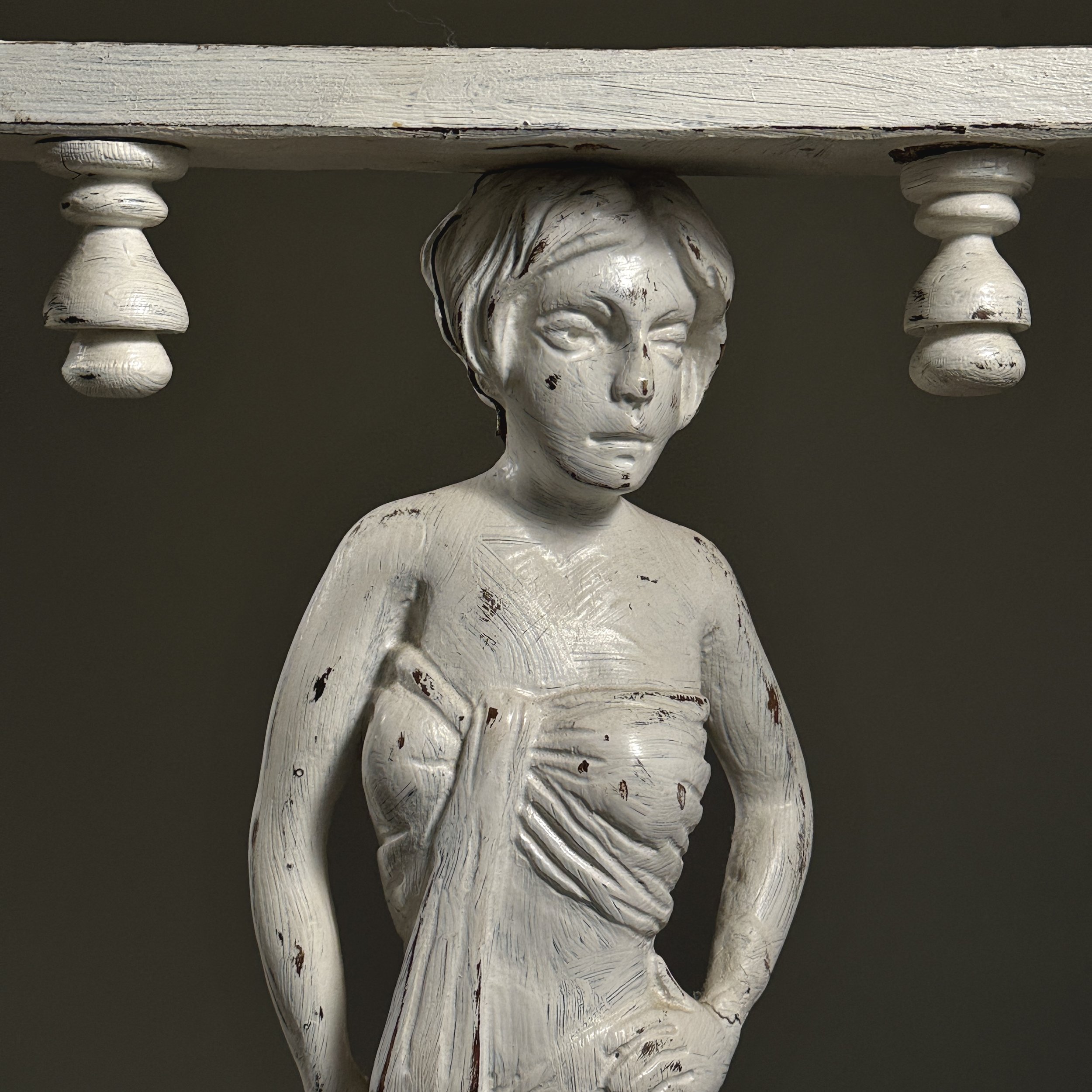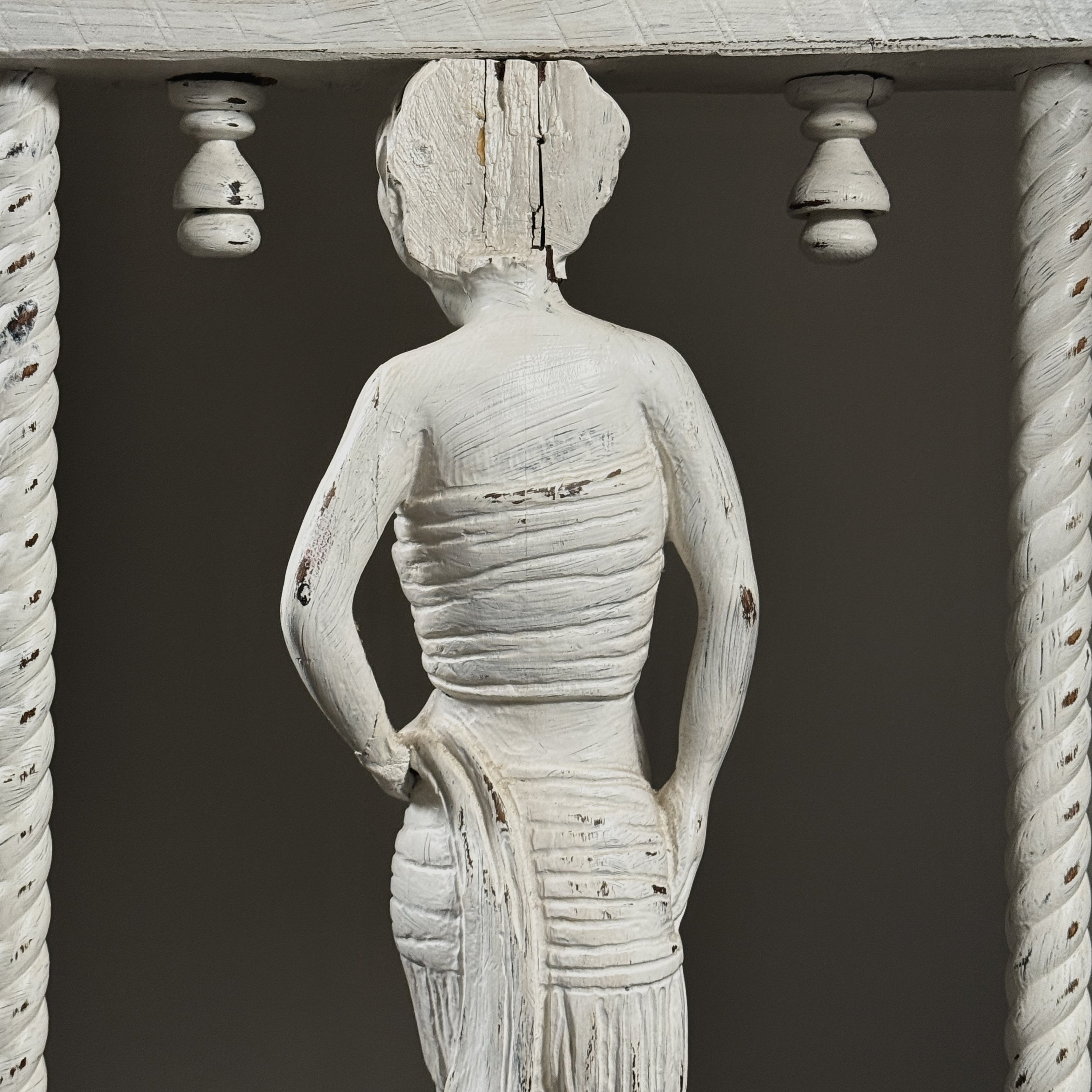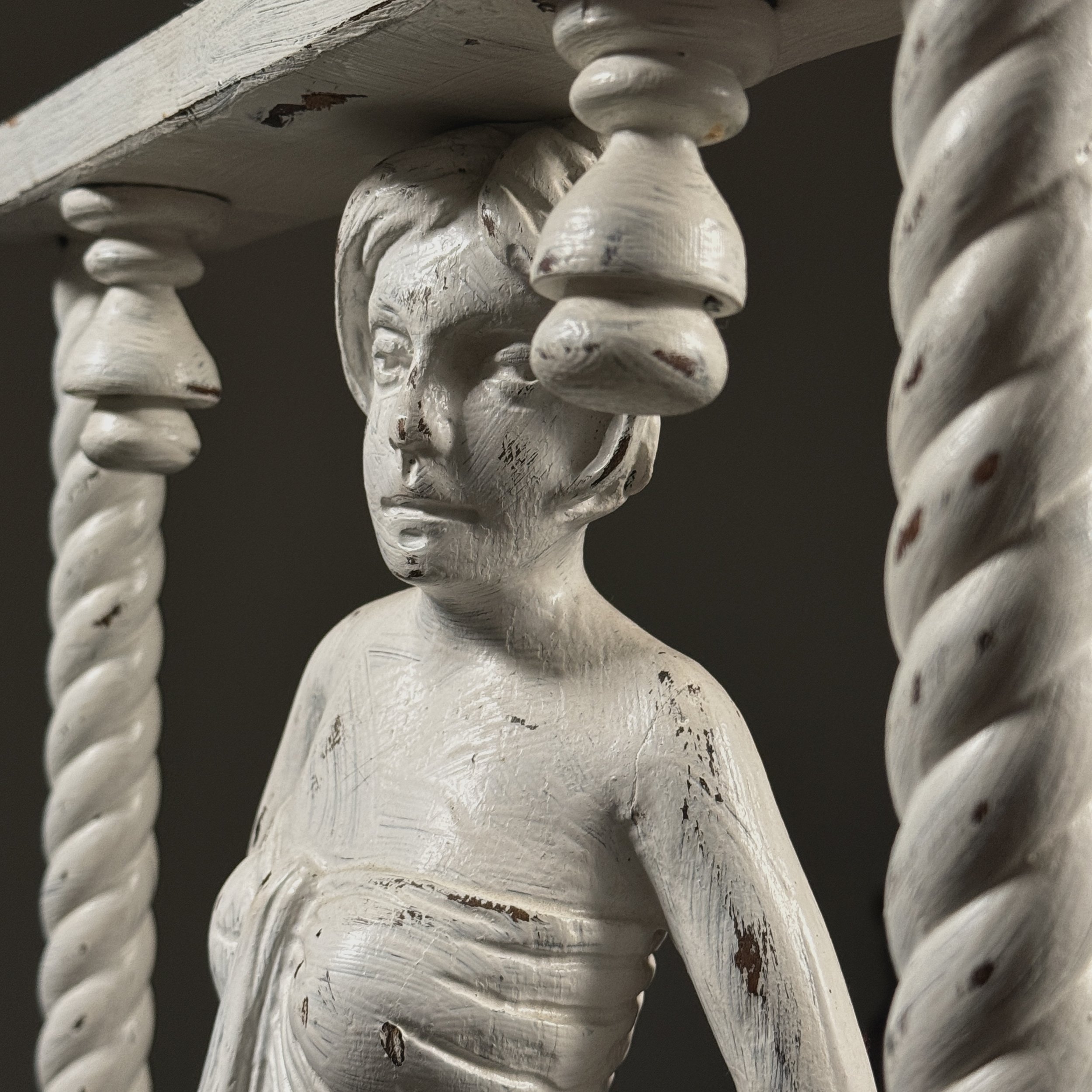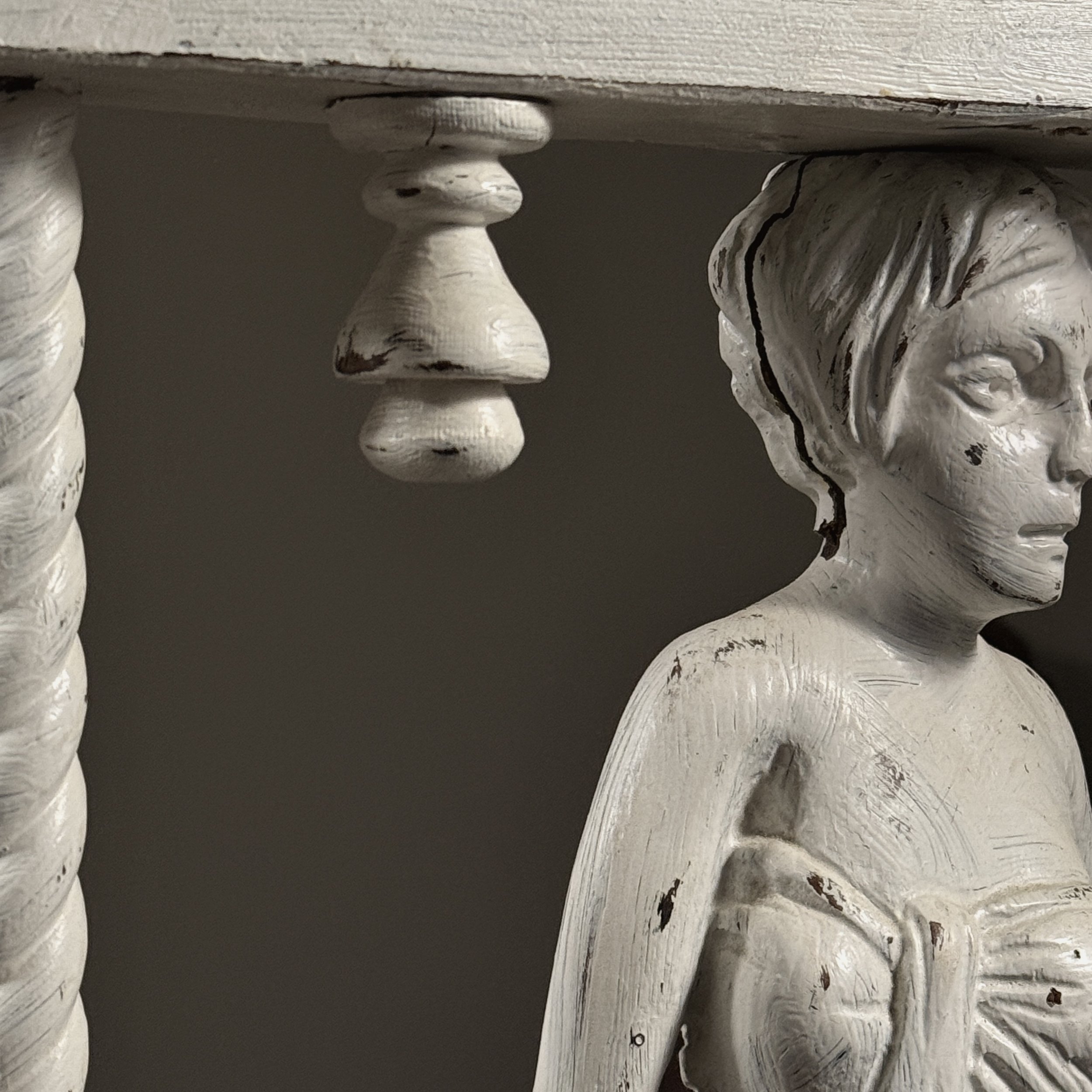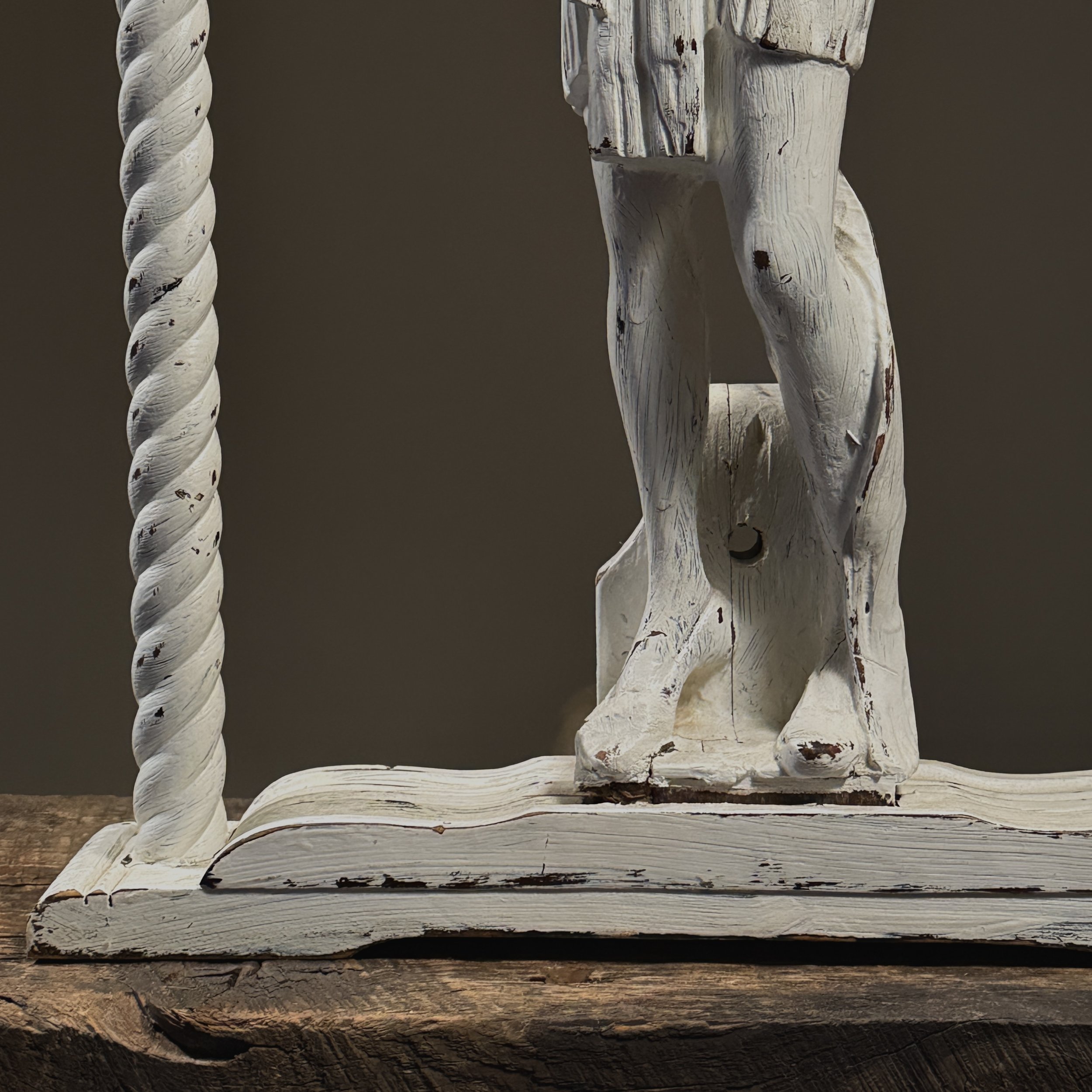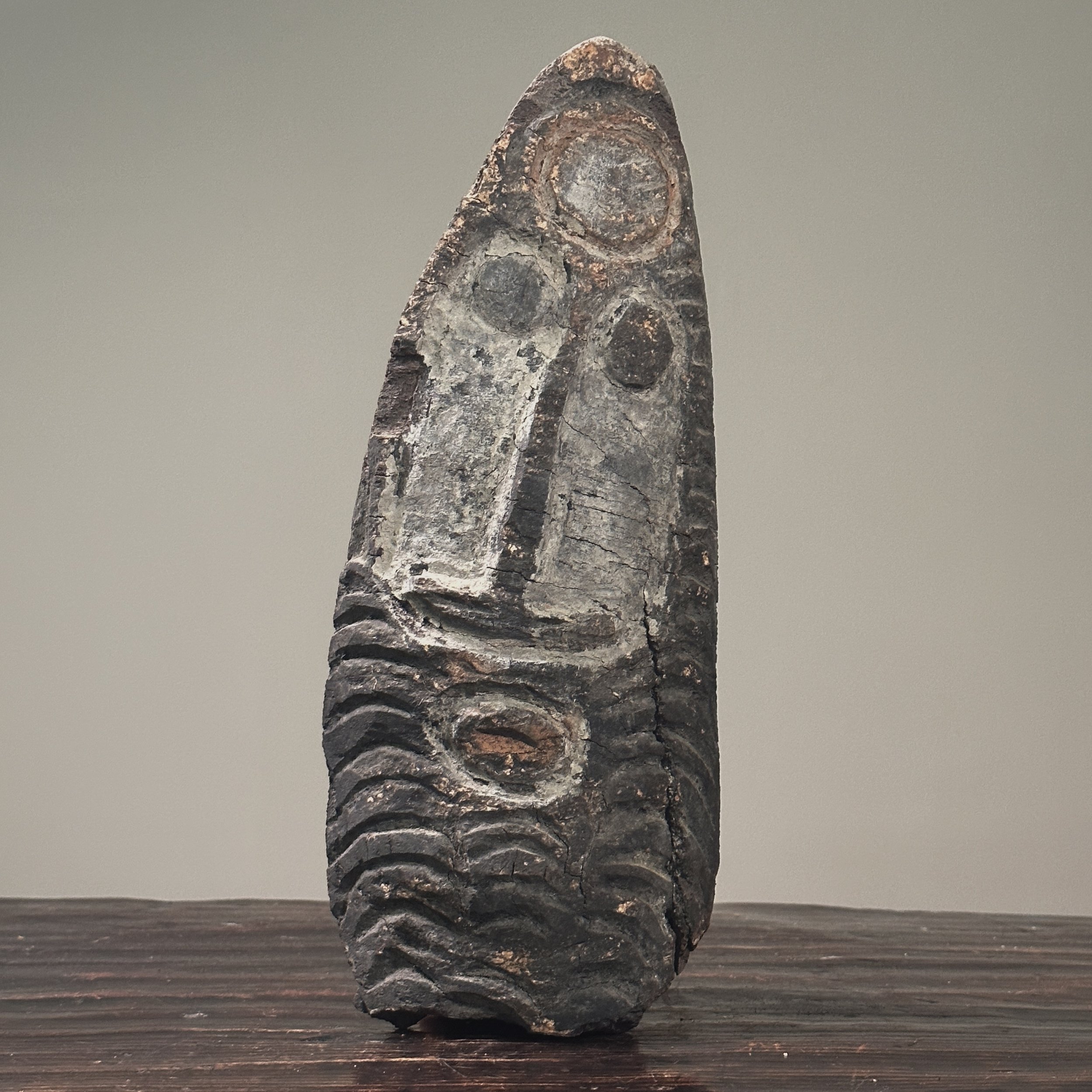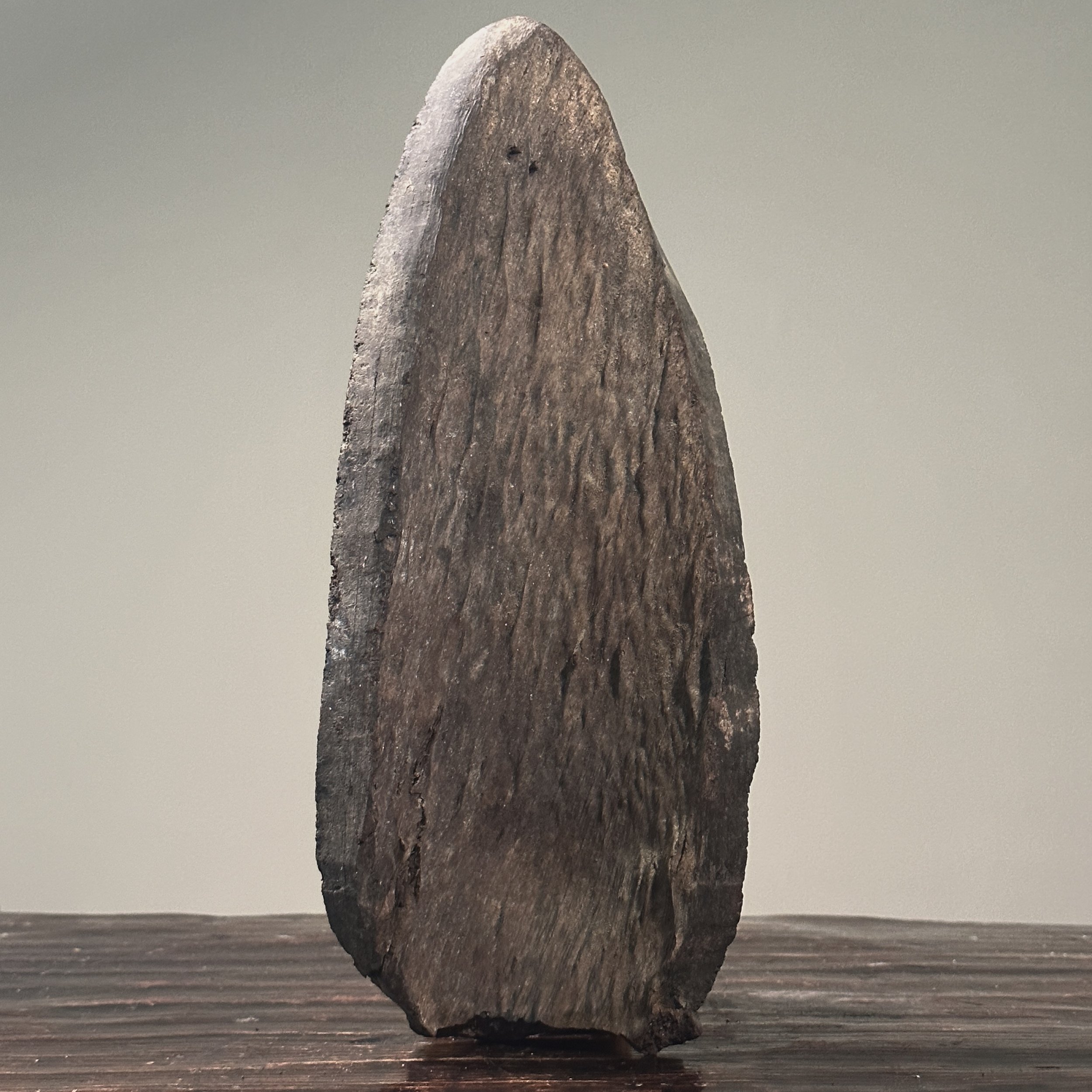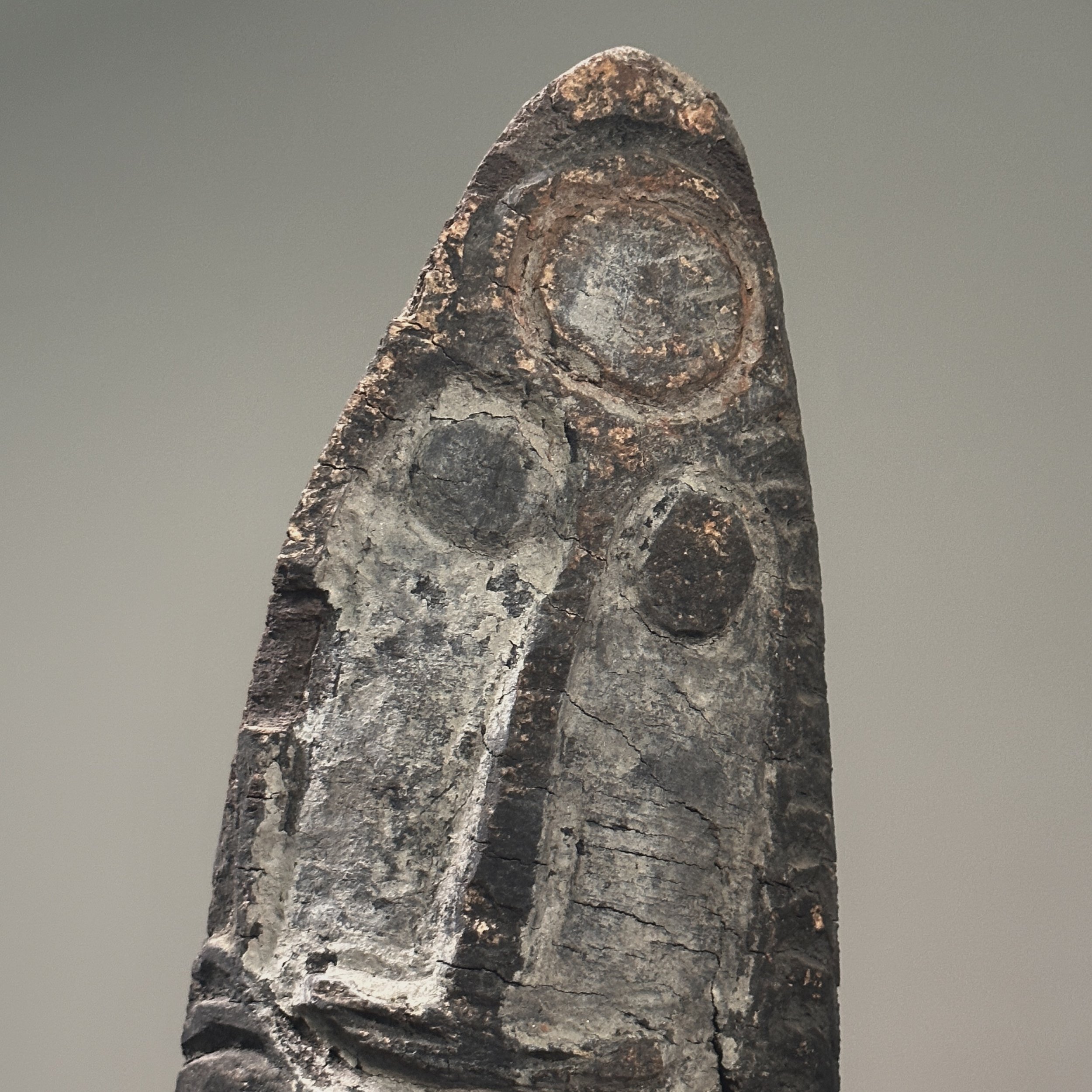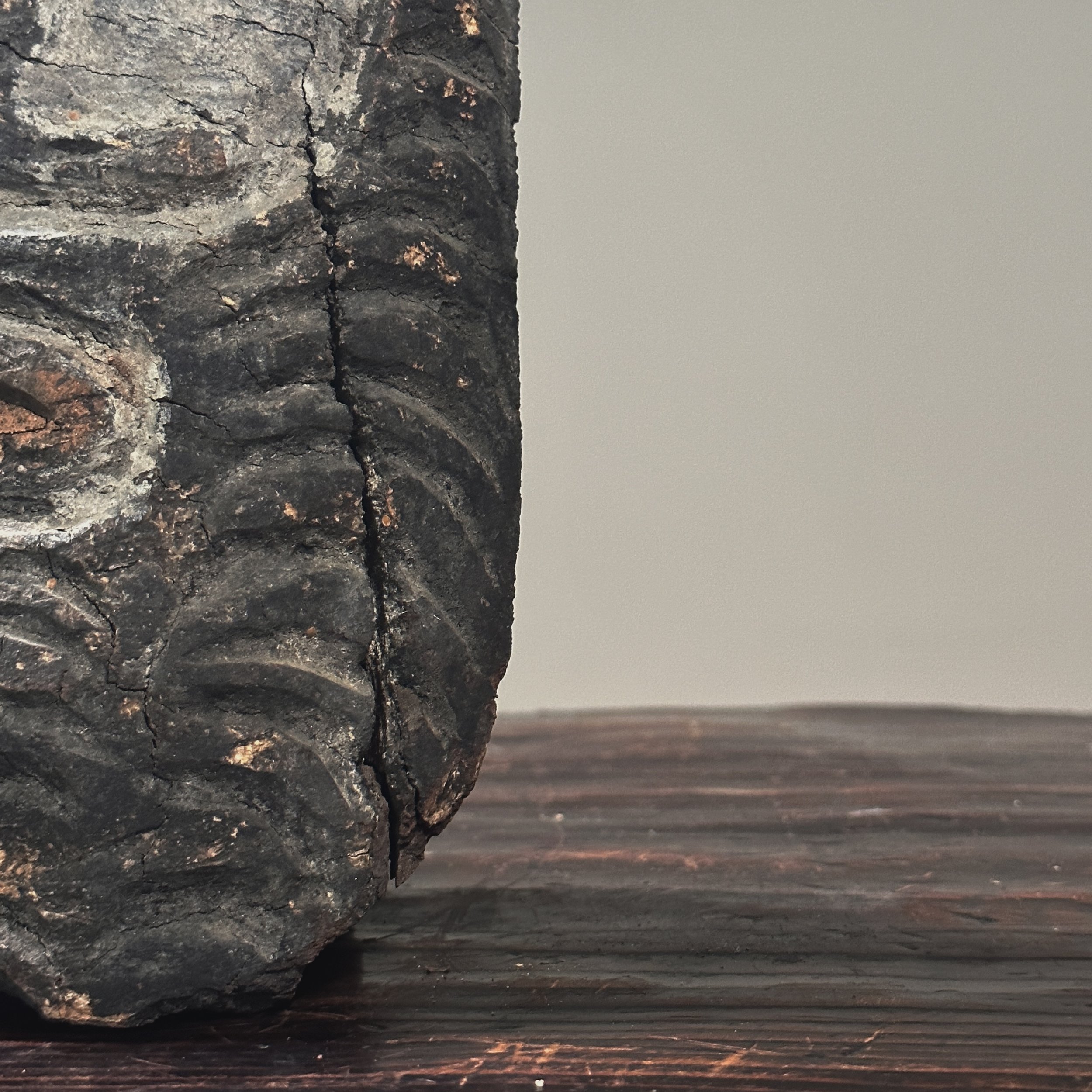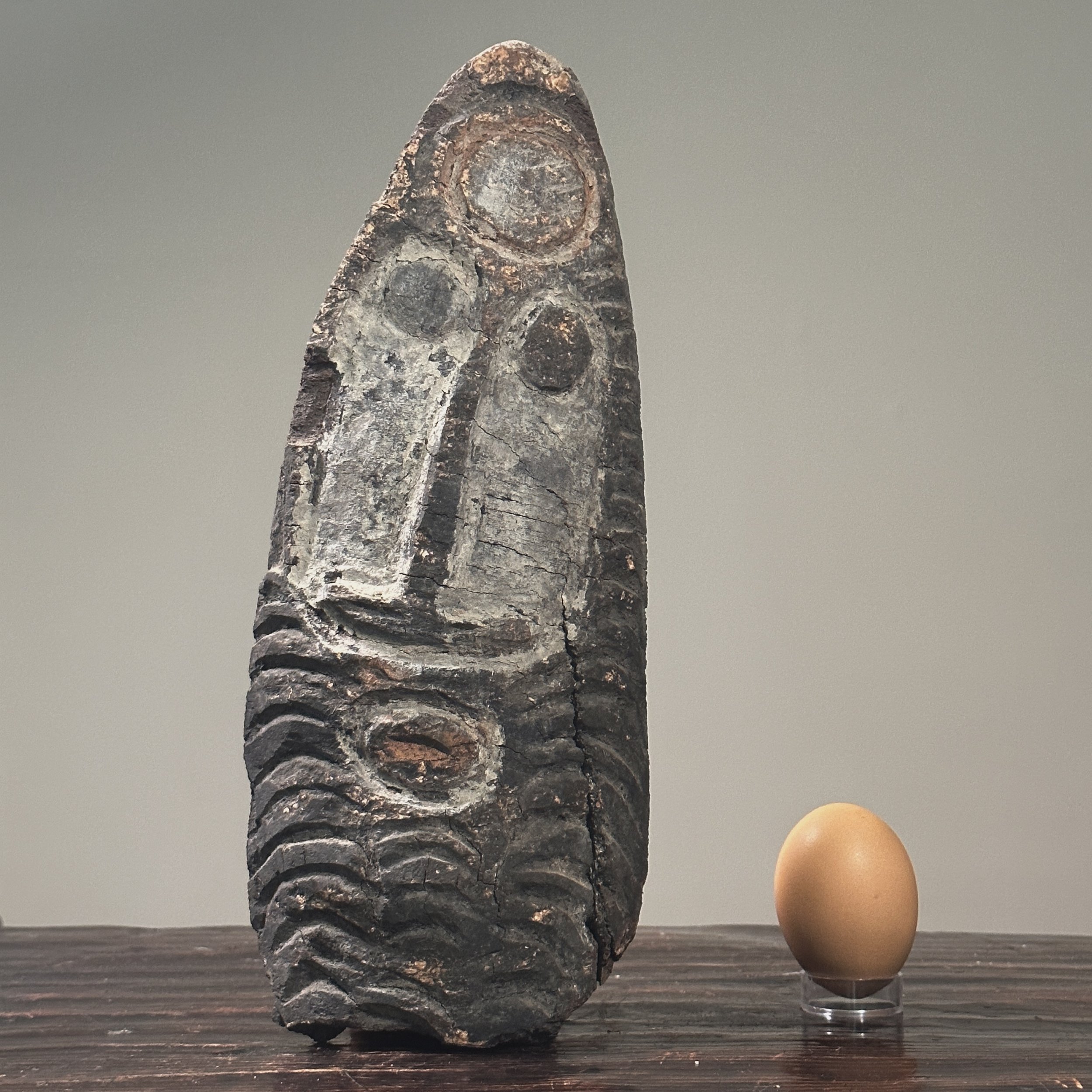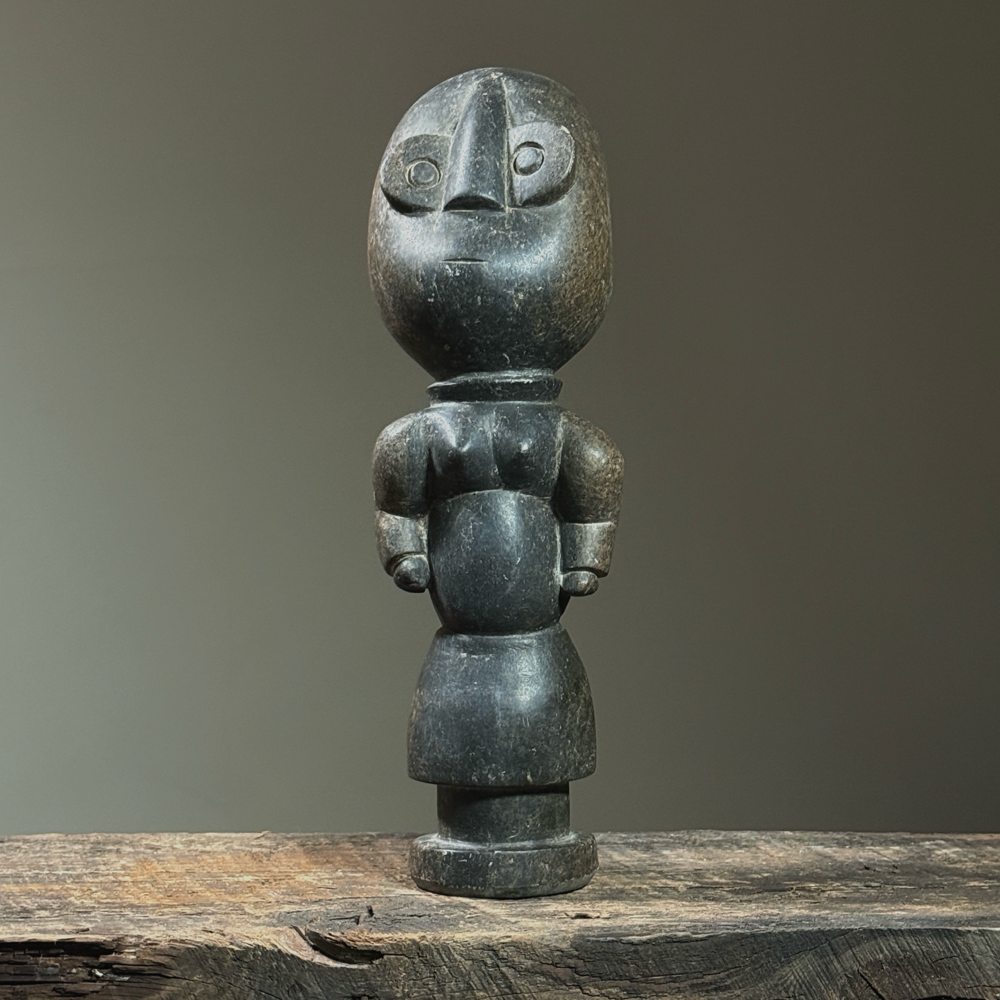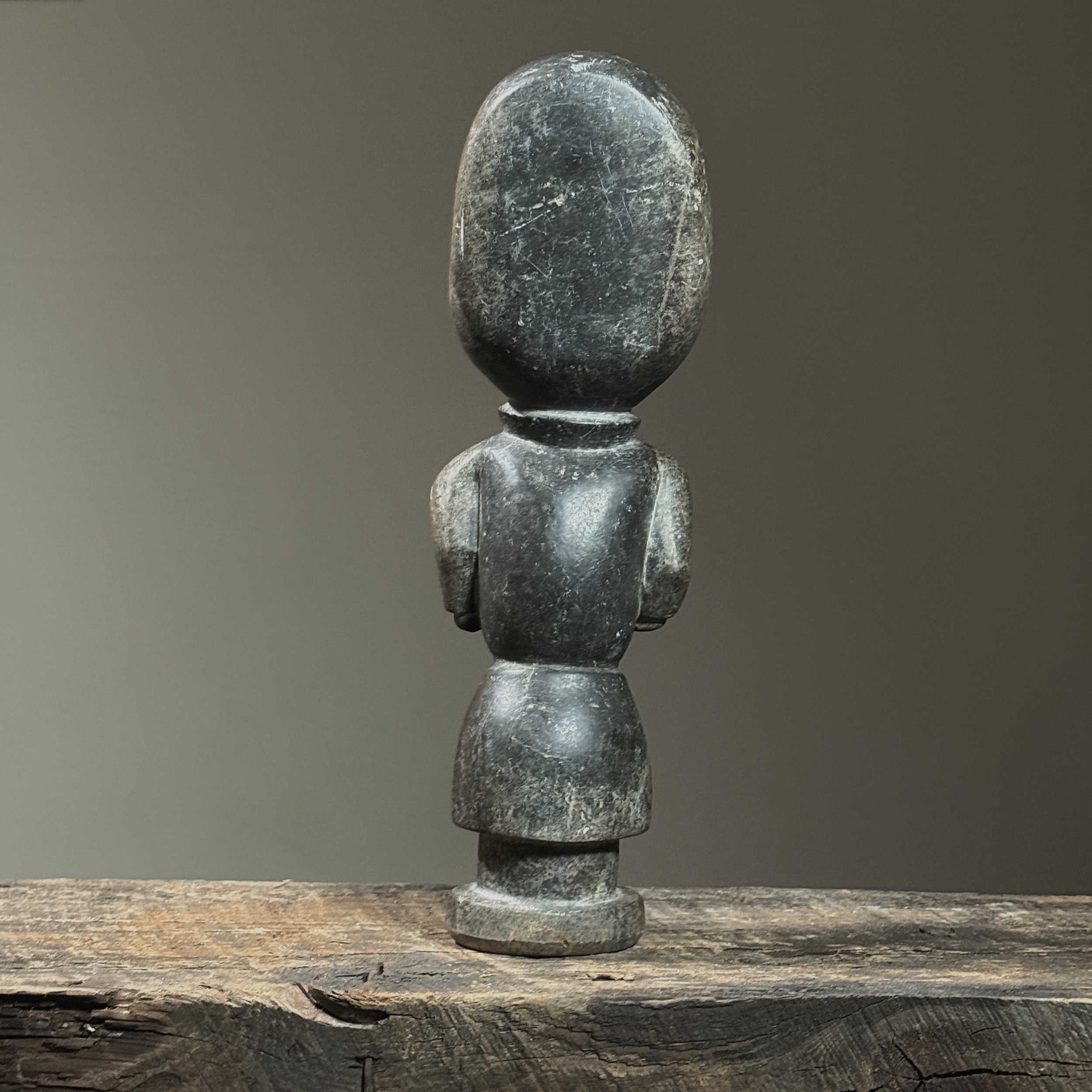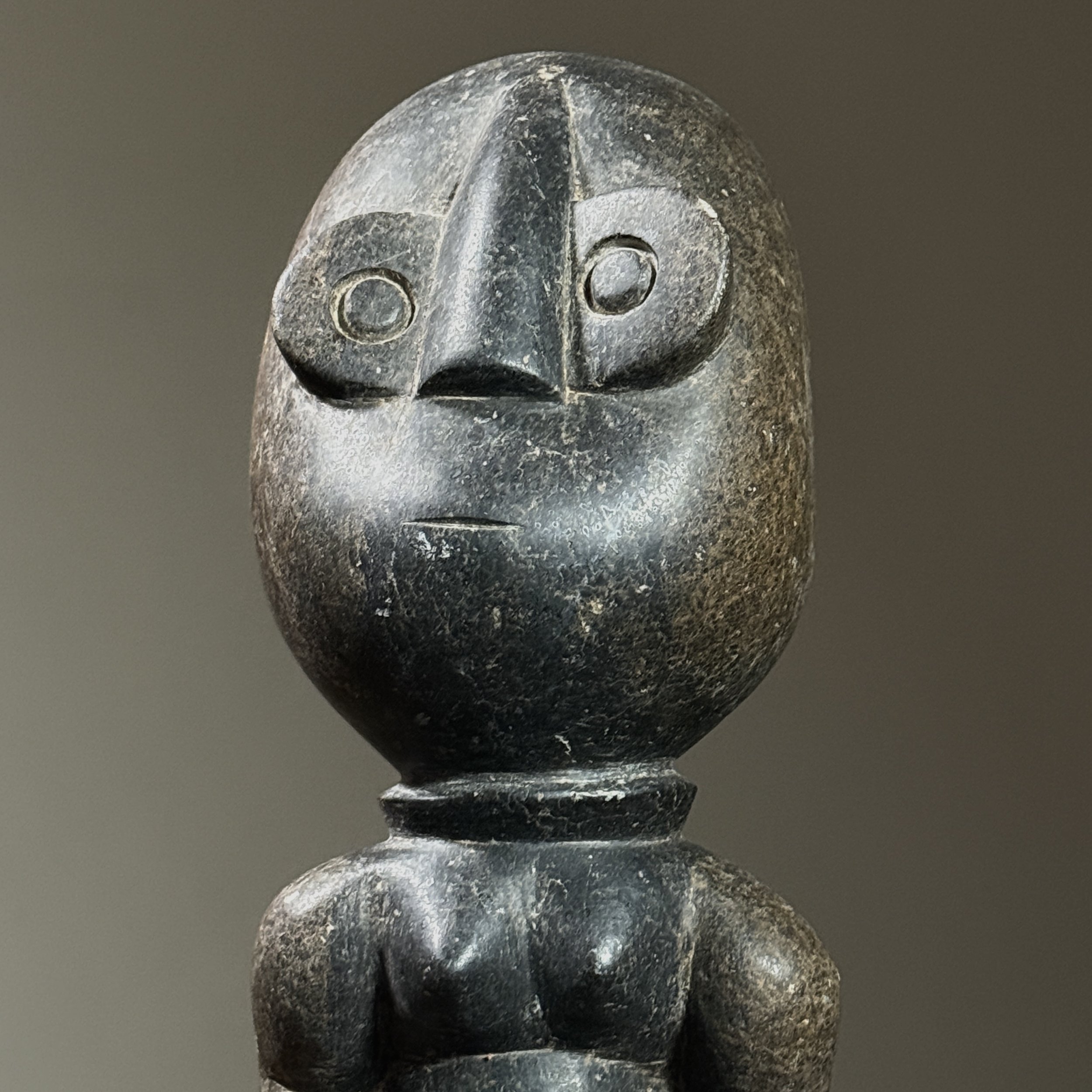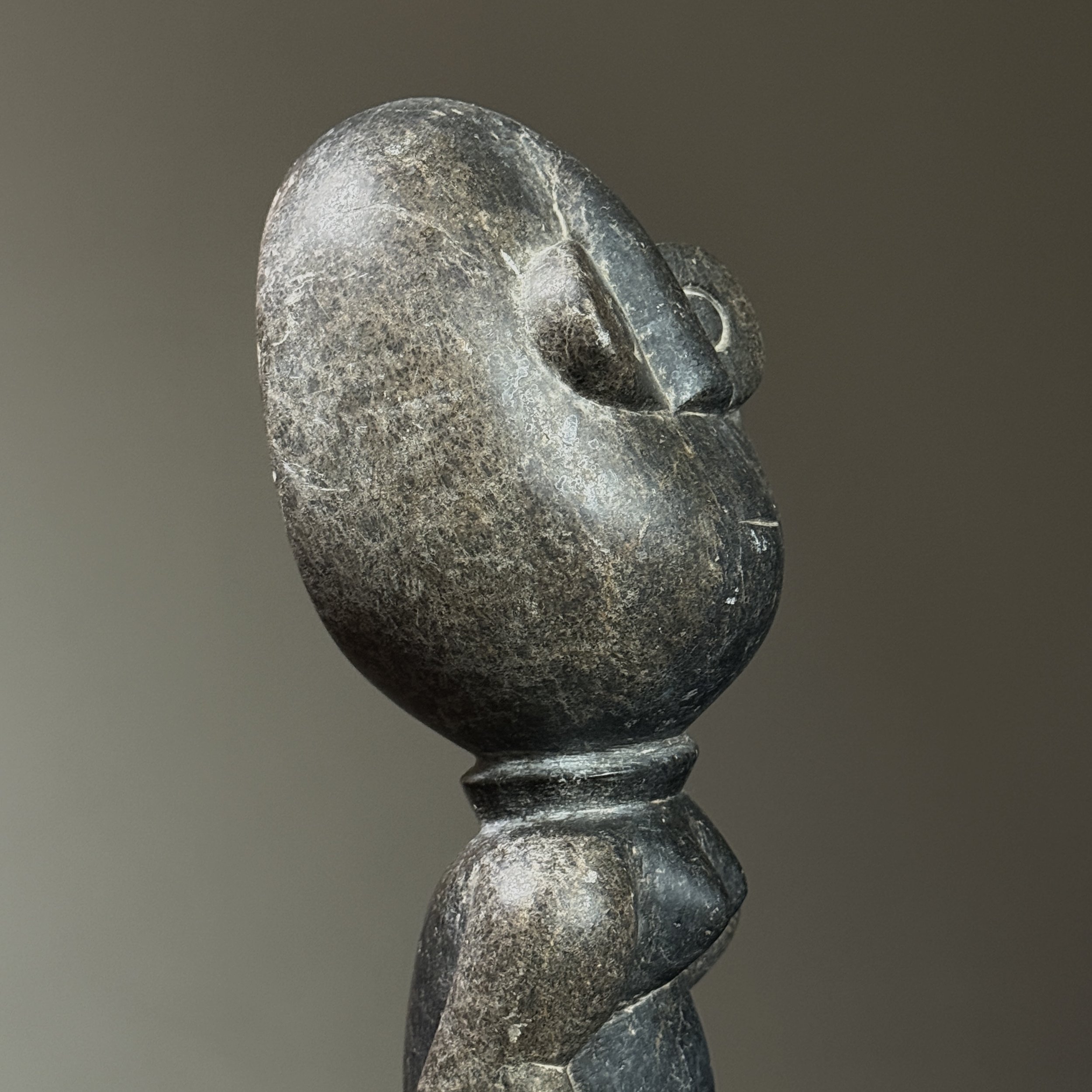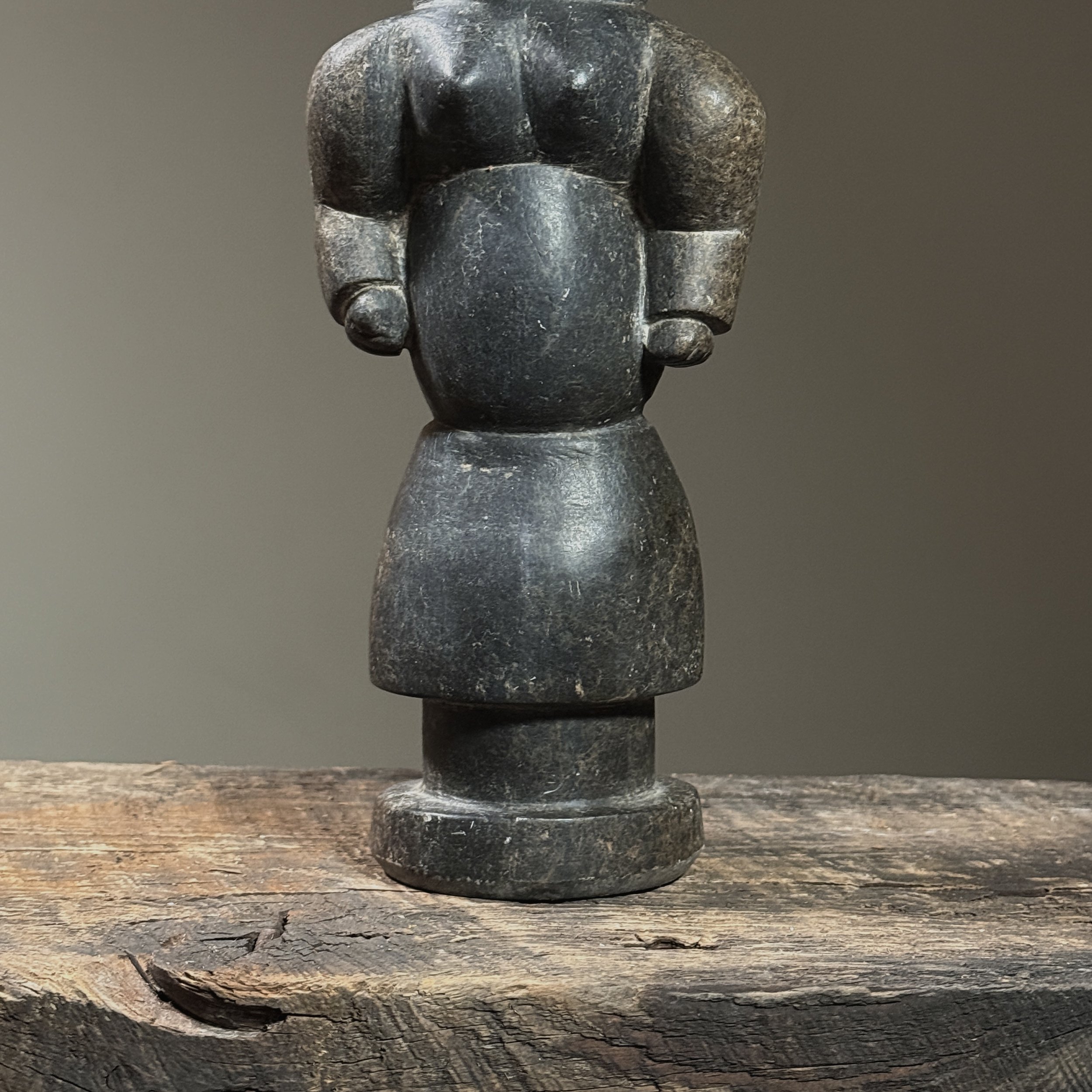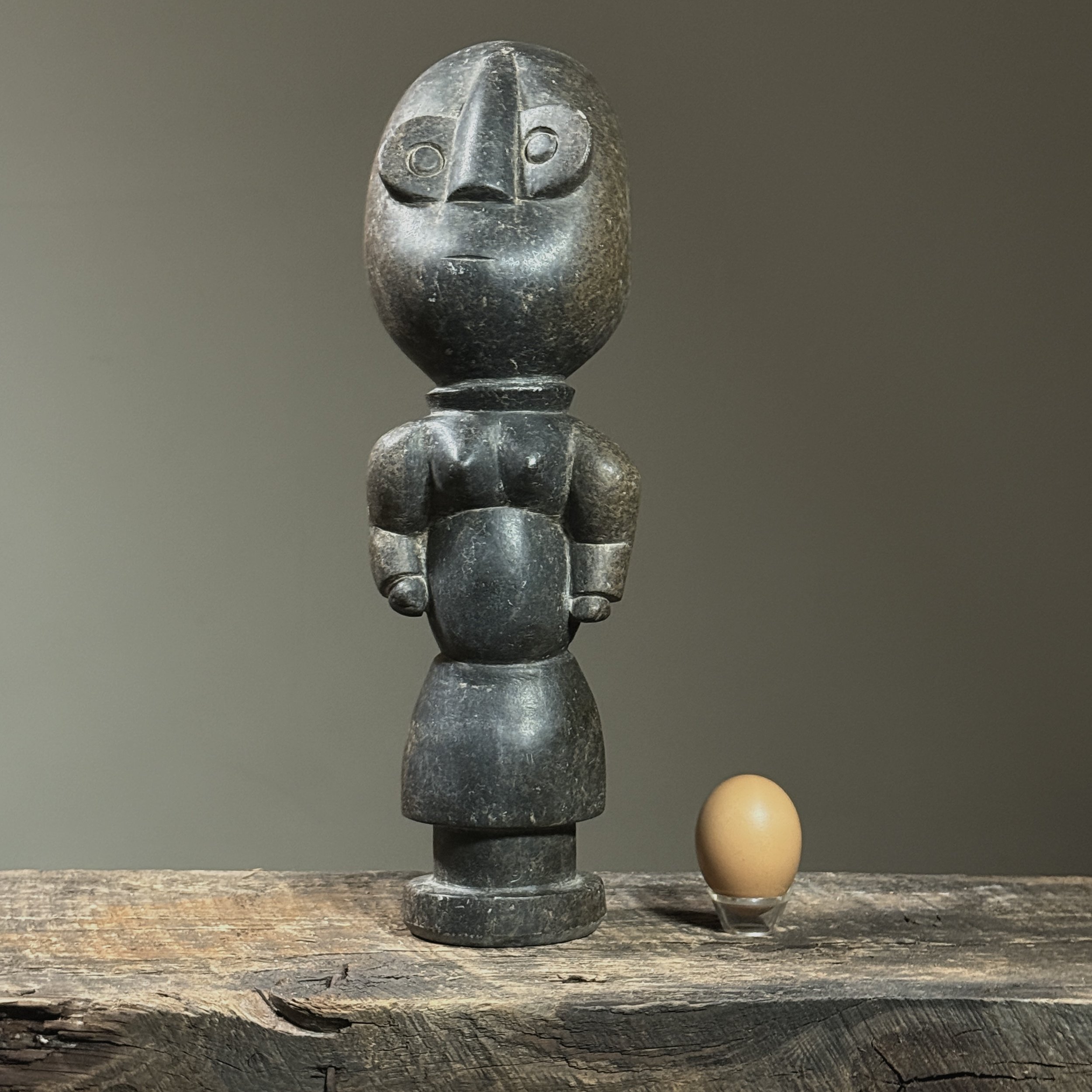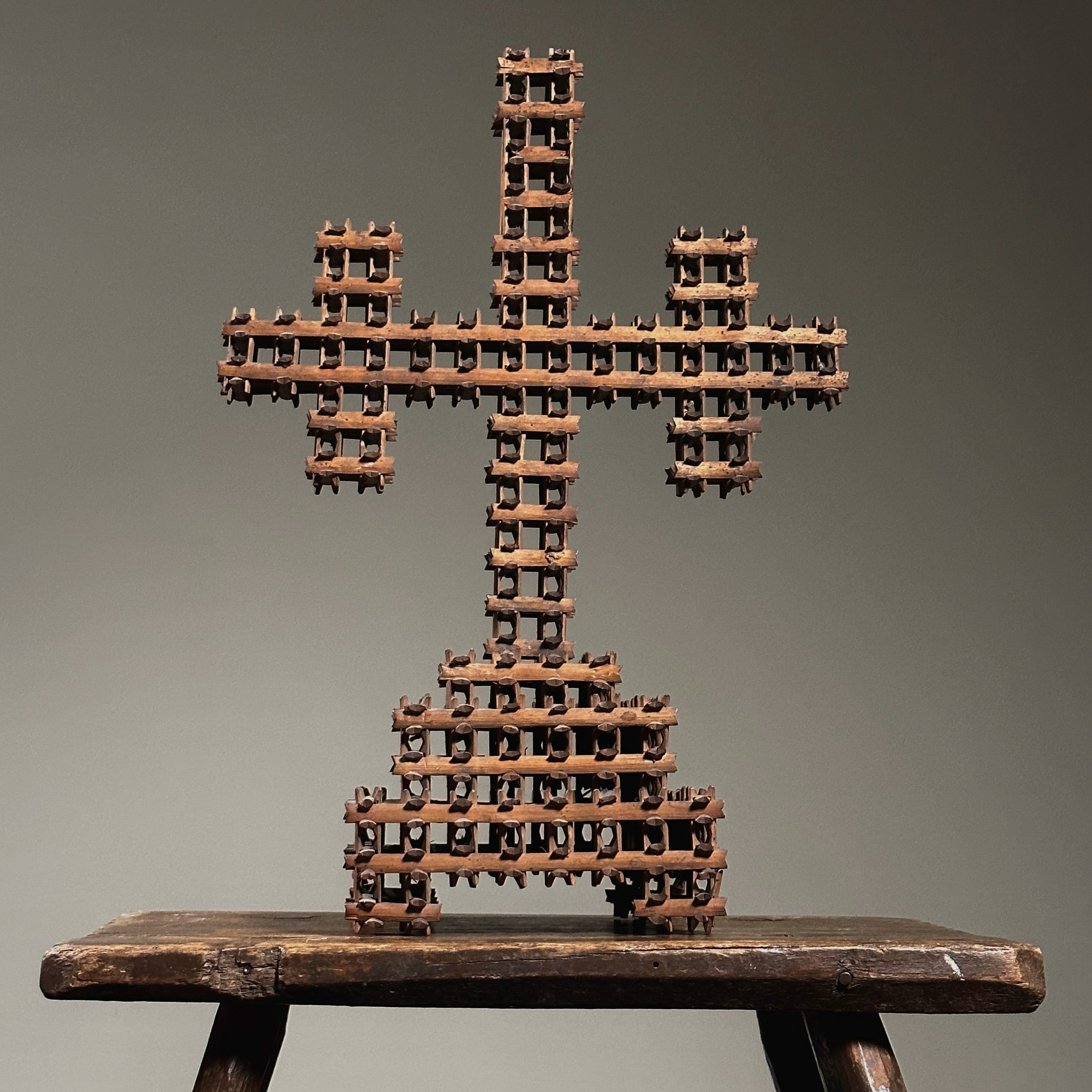 Image 1 of 11
Image 1 of 11

 Image 2 of 11
Image 2 of 11

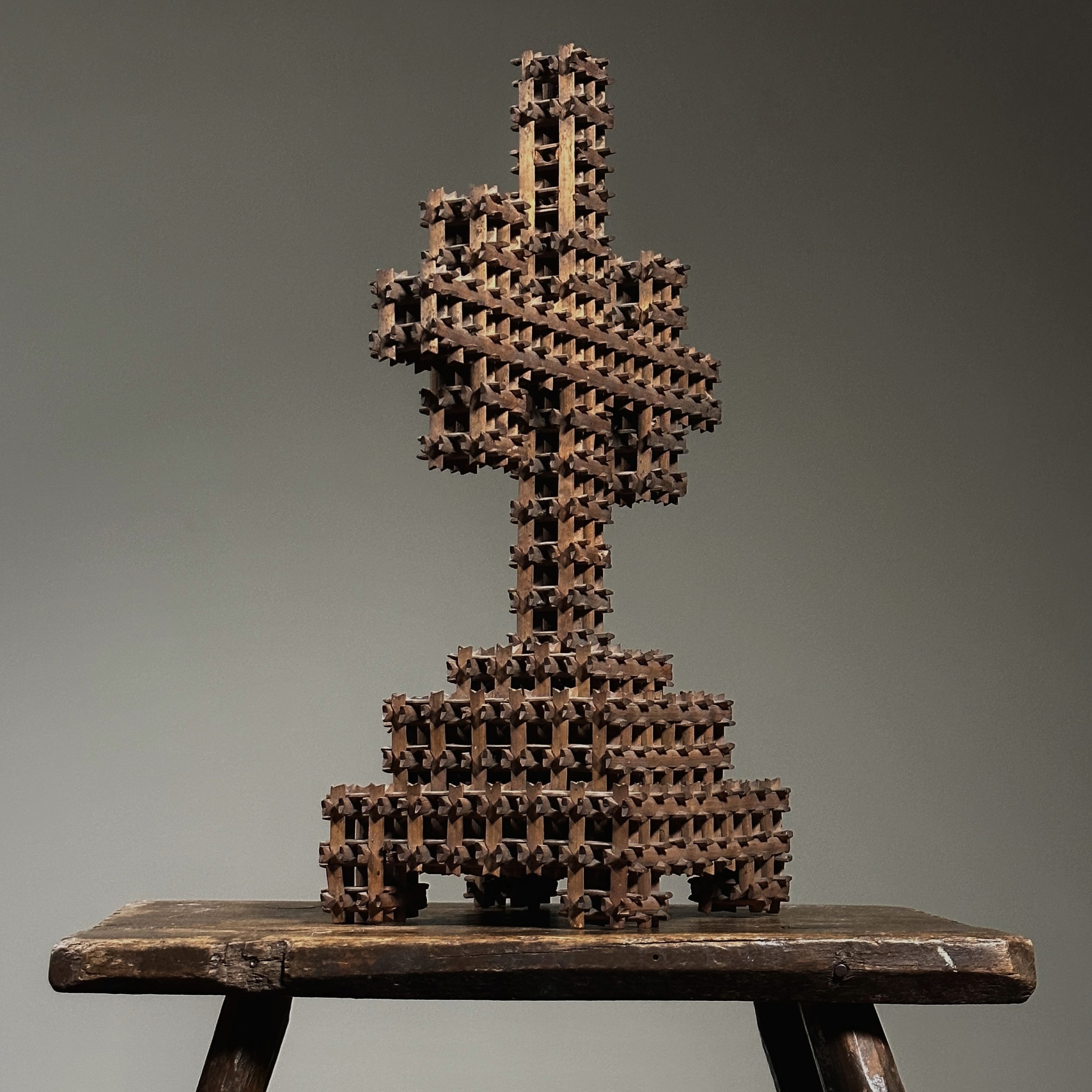 Image 3 of 11
Image 3 of 11

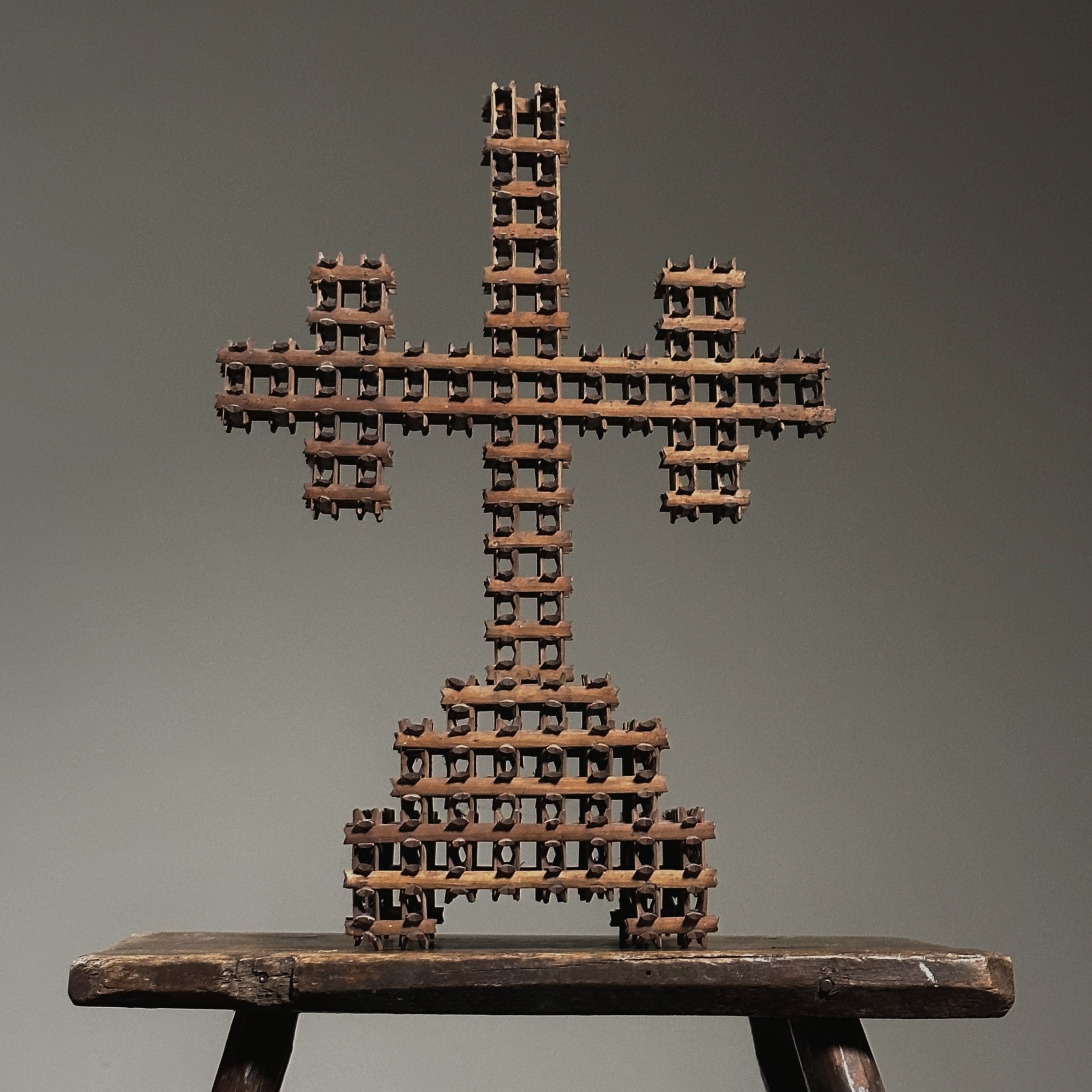 Image 4 of 11
Image 4 of 11

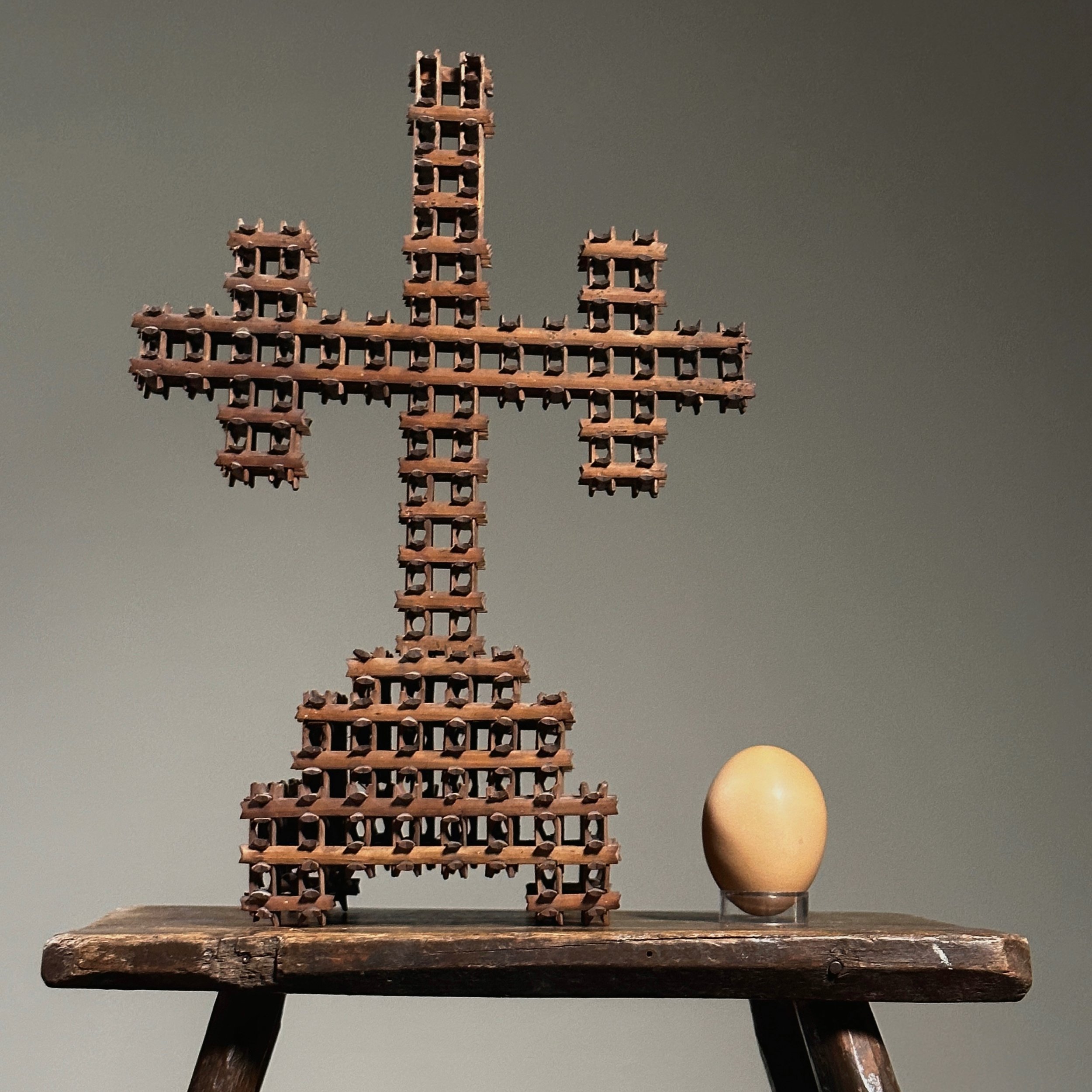 Image 5 of 11
Image 5 of 11

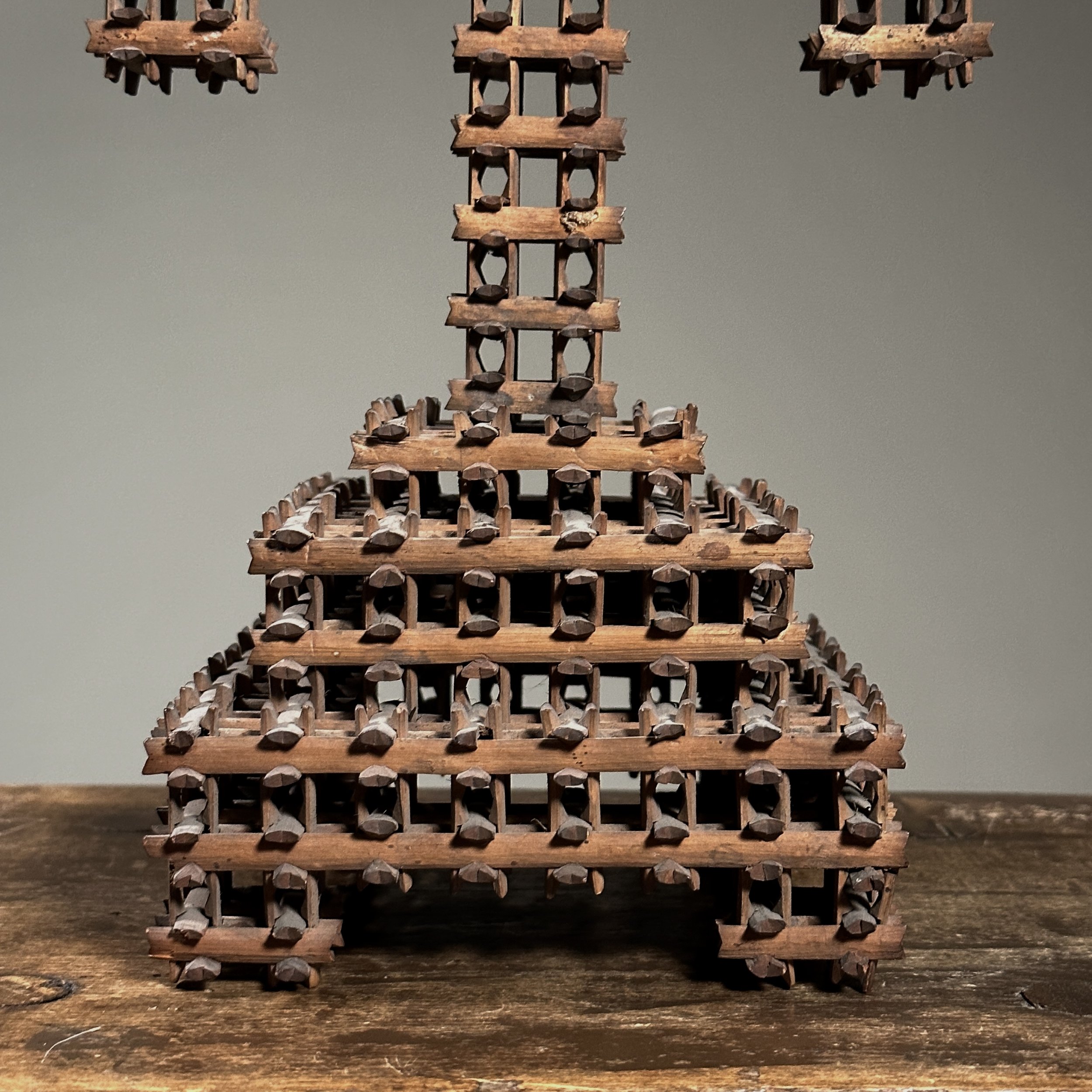 Image 6 of 11
Image 6 of 11

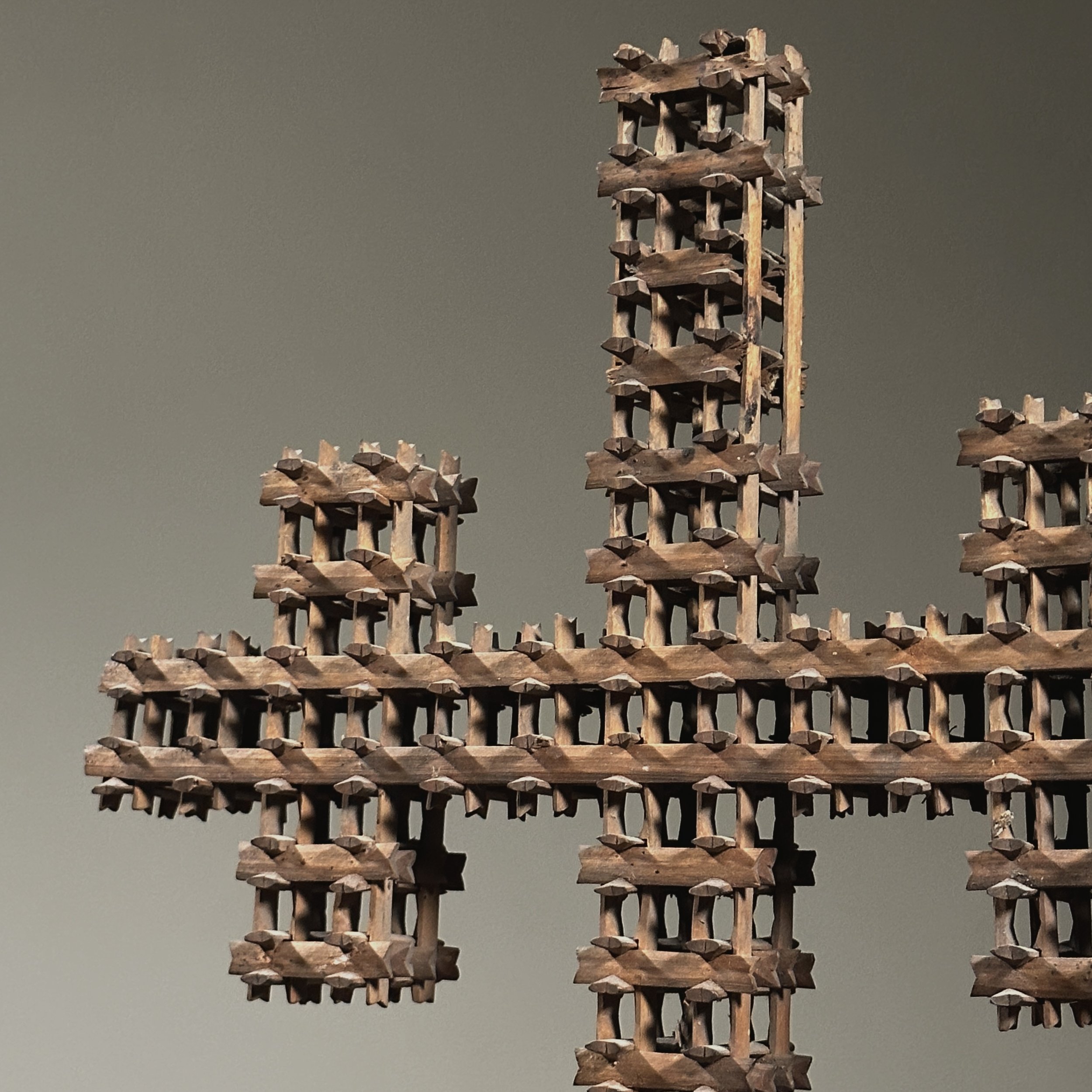 Image 7 of 11
Image 7 of 11

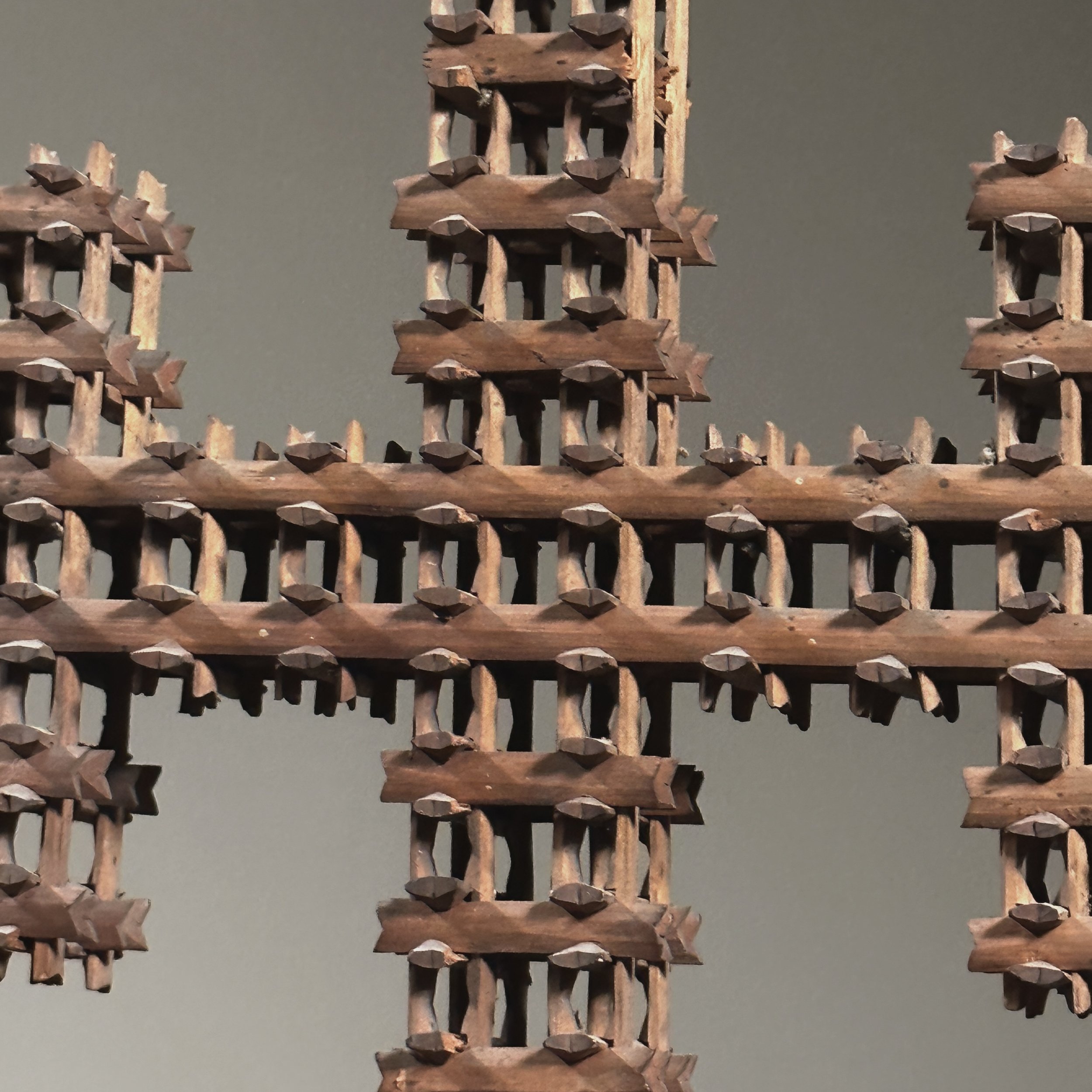 Image 8 of 11
Image 8 of 11

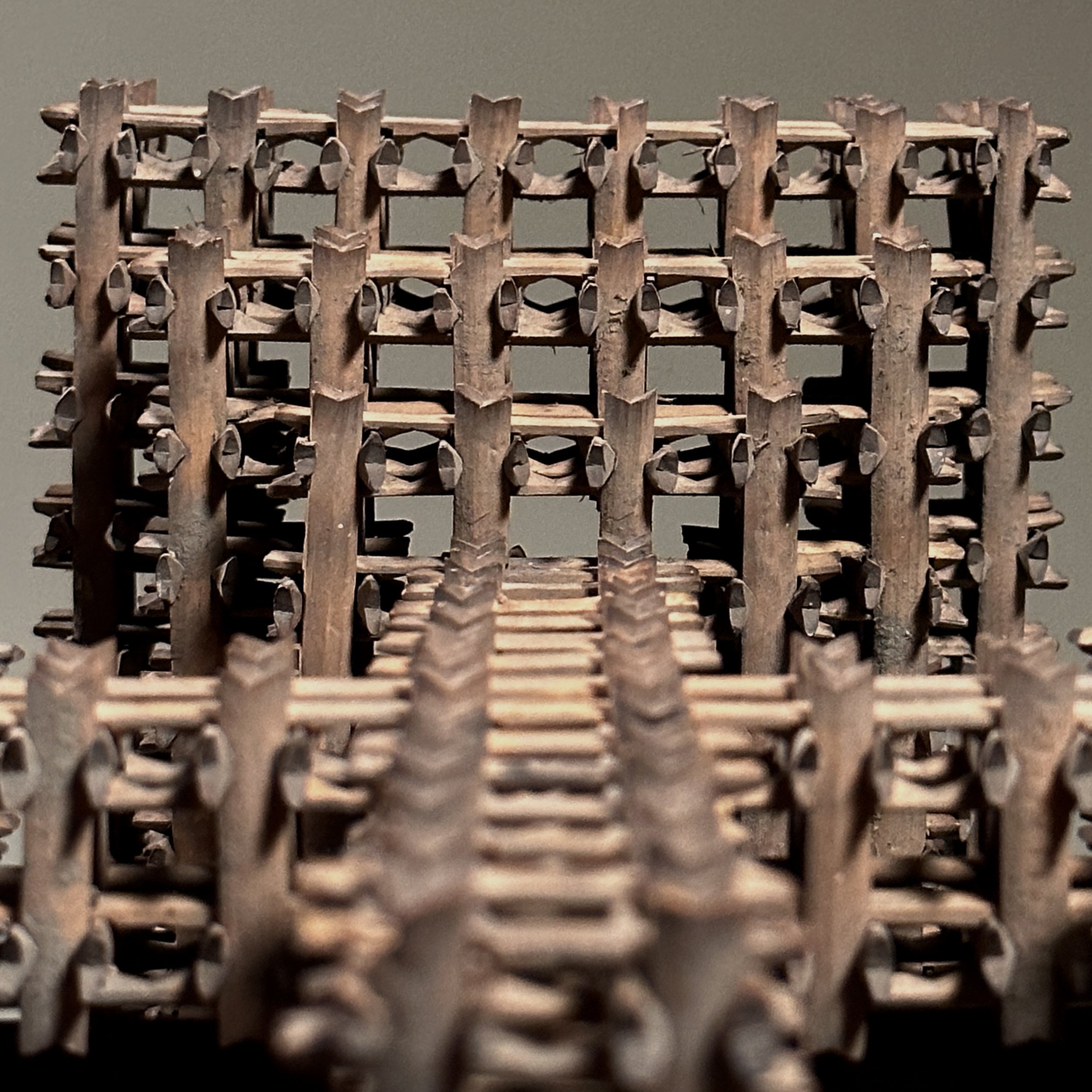 Image 9 of 11
Image 9 of 11

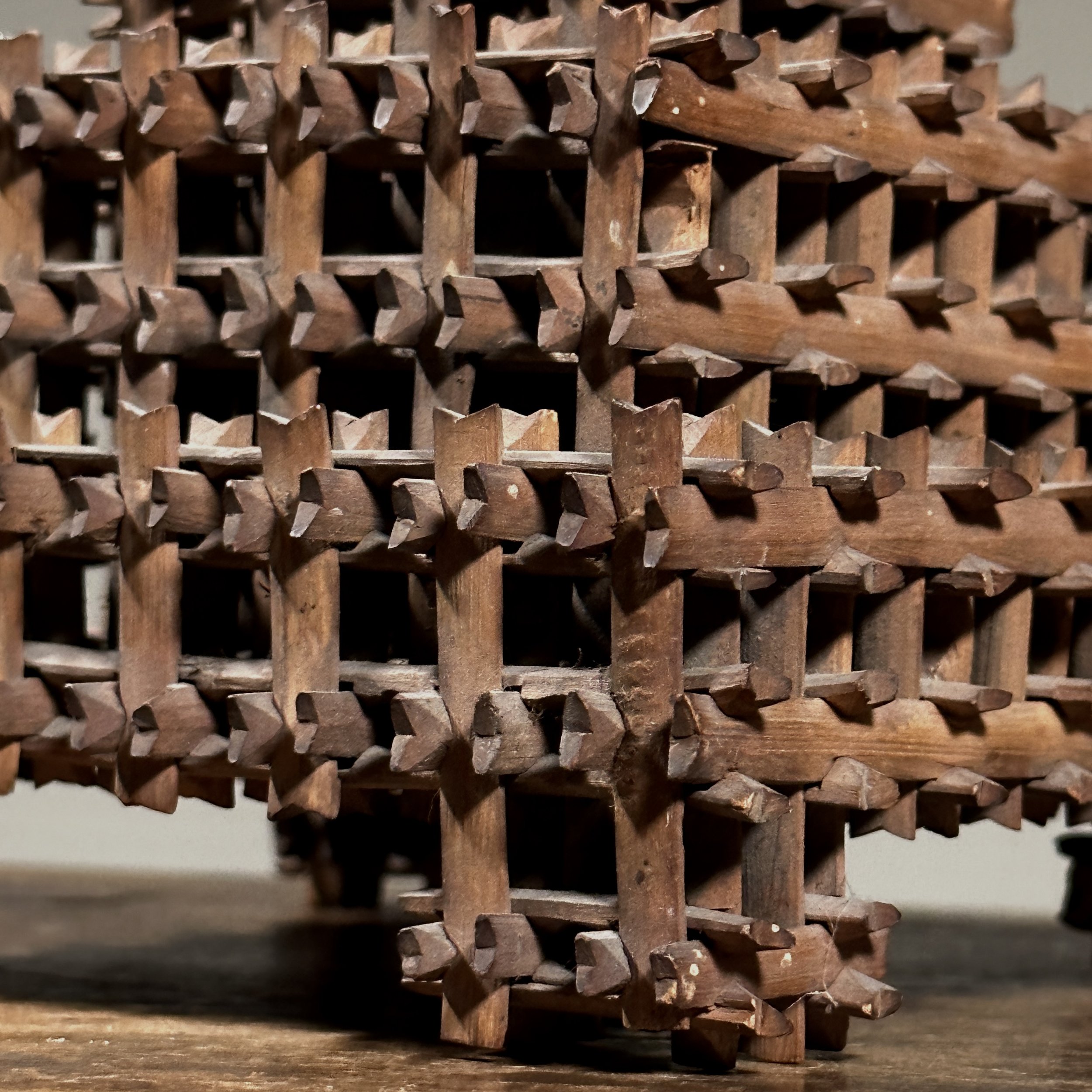 Image 10 of 11
Image 10 of 11

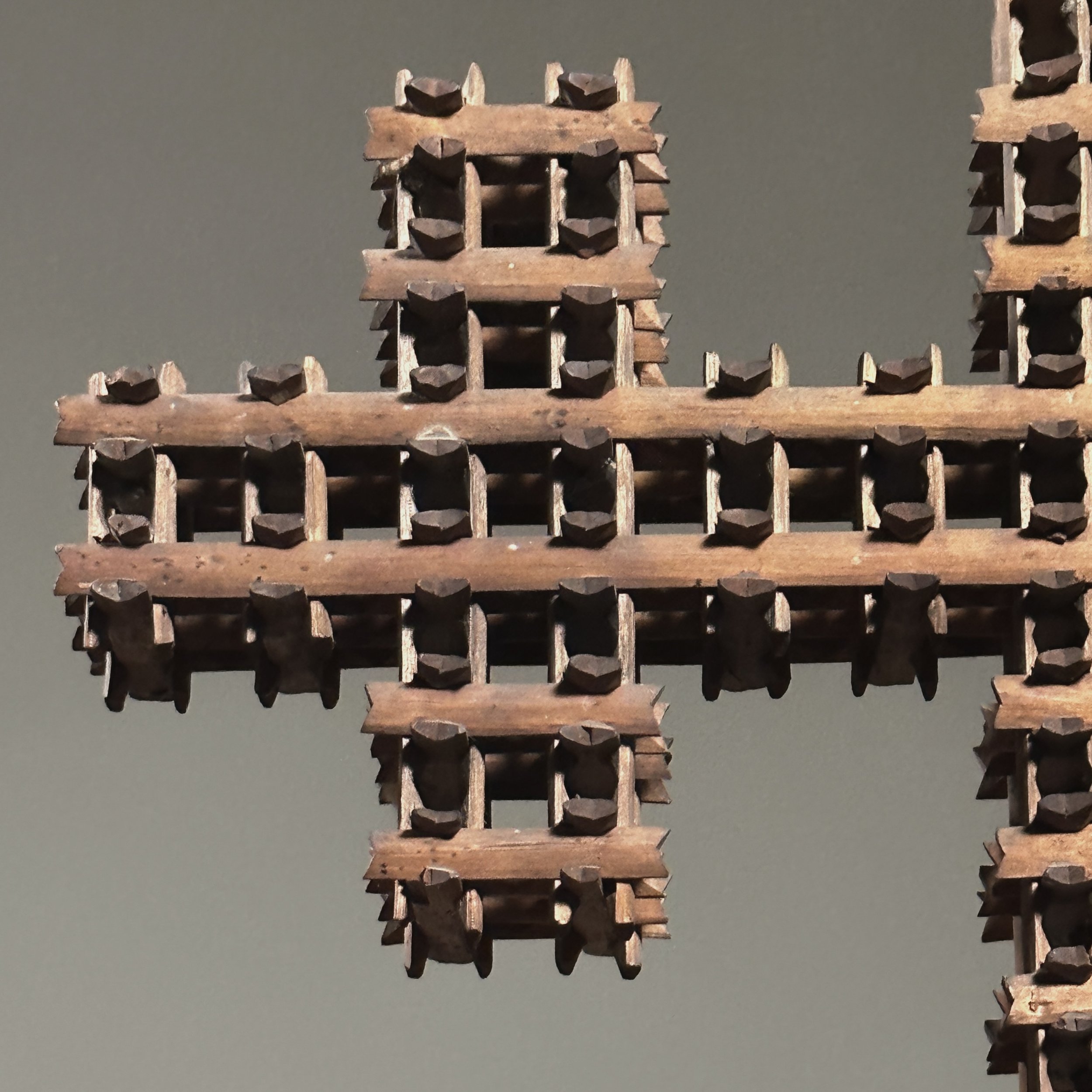 Image 11 of 11
Image 11 of 11












Antique 19th Century Tramp Art Crown of Thorns Crucifix Footed Sculpture
Antique 19th Century Tramp Art Crown of Thorns Crucifix Footed Sculpture. Crown of thorns style construction of a crucifix mounted on a six layer tiered stand. Overall in very good condition considering the age and fragility of the piece. One small 1.5 inch section missing on the top layer.
Size: 12.5”H x 9.25”W x 5.25”D
The Crown of Thorns Construction is named because of the interlocking construction technique, which was supposed to represent Jesus’s crown when he was crucified (Helaine Fendelman, Tramp Art, 1975). These objects were not made by vagrants, but by traveling printers, carpenters, and cigar makers who “tramped” from city to city advertising their skills (Lynda Hartigan, Made with Passion, 1990).
Antique 19th Century Tramp Art Crown of Thorns Crucifix Footed Sculpture. Crown of thorns style construction of a crucifix mounted on a six layer tiered stand. Overall in very good condition considering the age and fragility of the piece. One small 1.5 inch section missing on the top layer.
Size: 12.5”H x 9.25”W x 5.25”D
The Crown of Thorns Construction is named because of the interlocking construction technique, which was supposed to represent Jesus’s crown when he was crucified (Helaine Fendelman, Tramp Art, 1975). These objects were not made by vagrants, but by traveling printers, carpenters, and cigar makers who “tramped” from city to city advertising their skills (Lynda Hartigan, Made with Passion, 1990).
Antique 19th Century Tramp Art Crown of Thorns Crucifix Footed Sculpture. Crown of thorns style construction of a crucifix mounted on a six layer tiered stand. Overall in very good condition considering the age and fragility of the piece. One small 1.5 inch section missing on the top layer.
Size: 12.5”H x 9.25”W x 5.25”D
The Crown of Thorns Construction is named because of the interlocking construction technique, which was supposed to represent Jesus’s crown when he was crucified (Helaine Fendelman, Tramp Art, 1975). These objects were not made by vagrants, but by traveling printers, carpenters, and cigar makers who “tramped” from city to city advertising their skills (Lynda Hartigan, Made with Passion, 1990).


